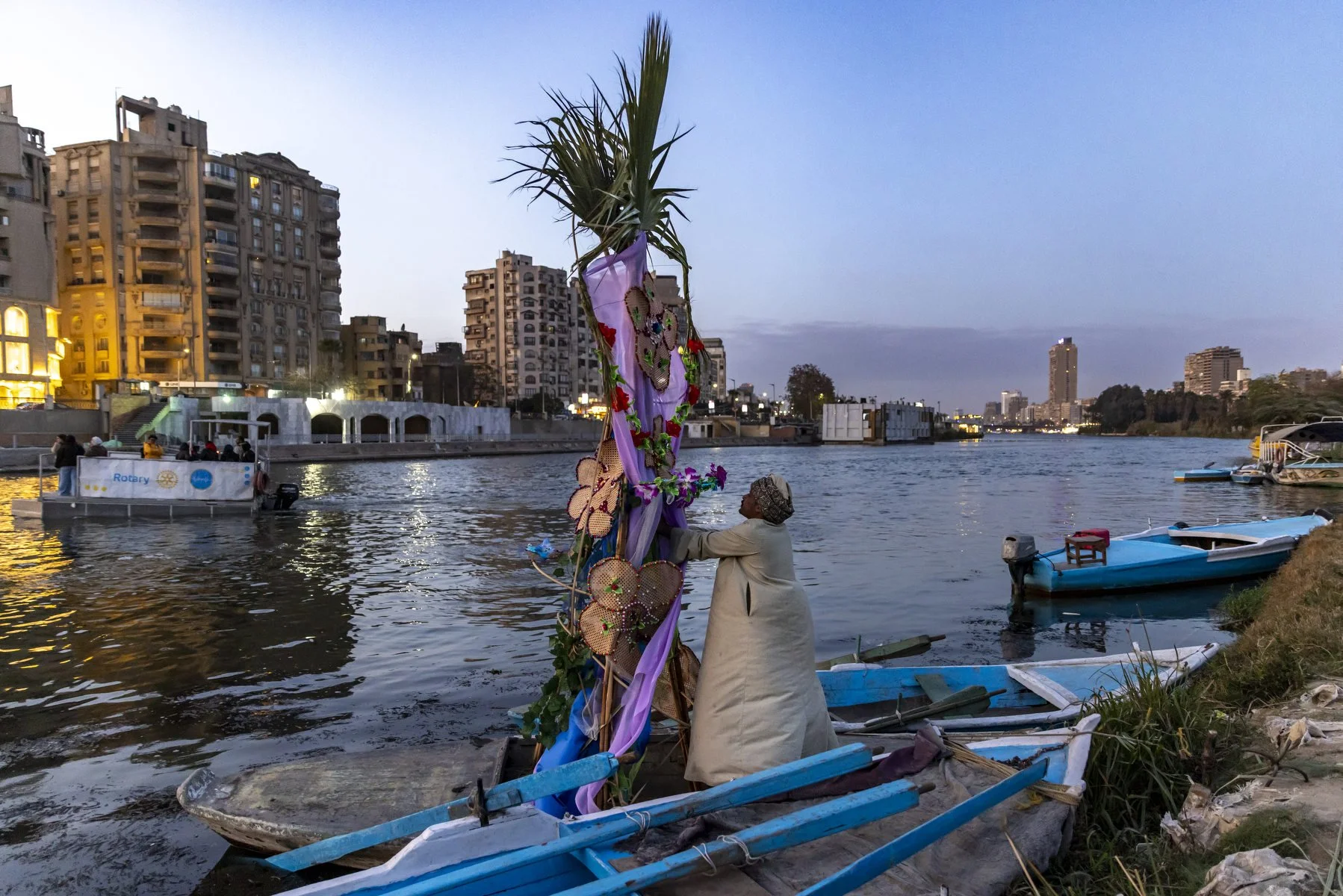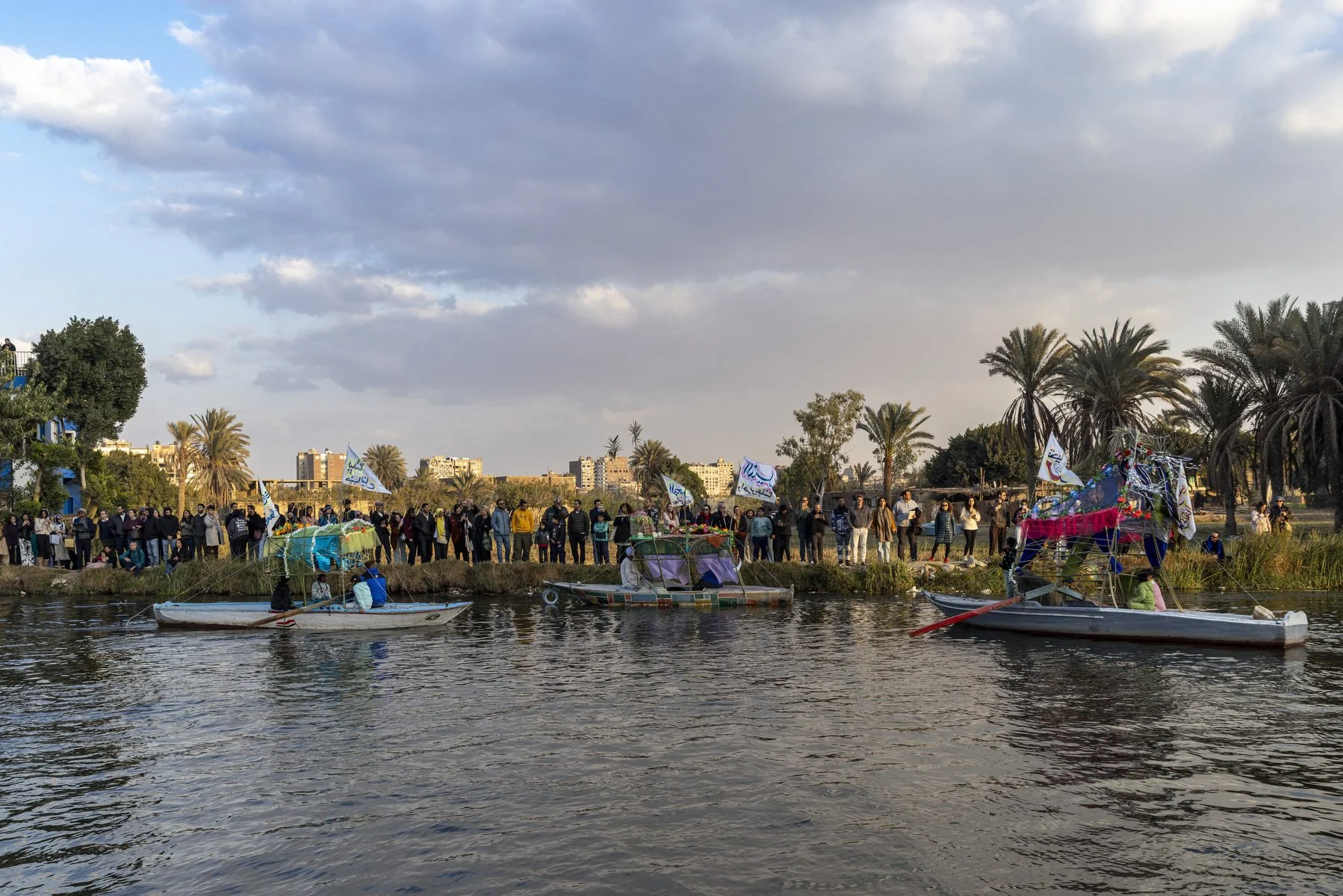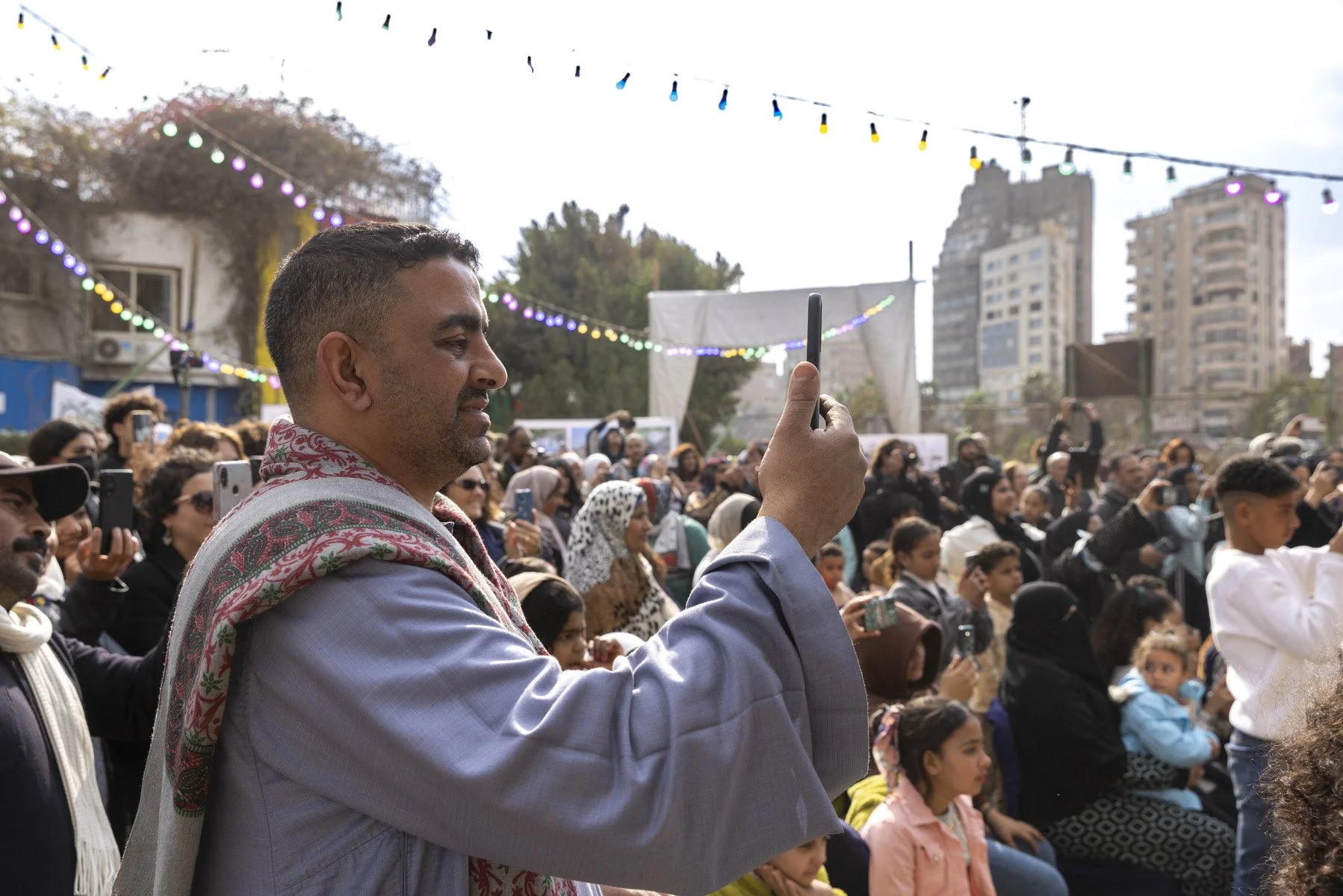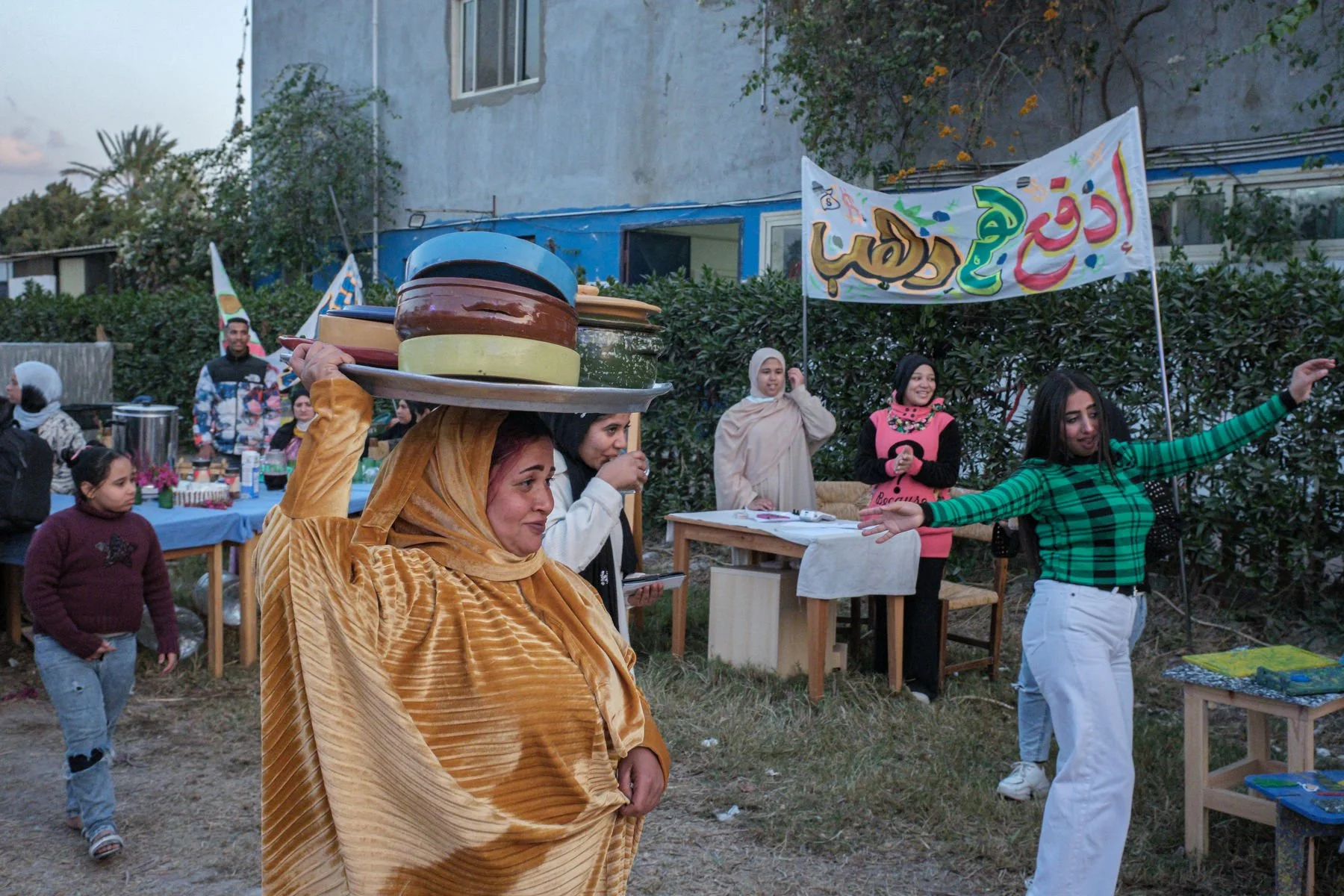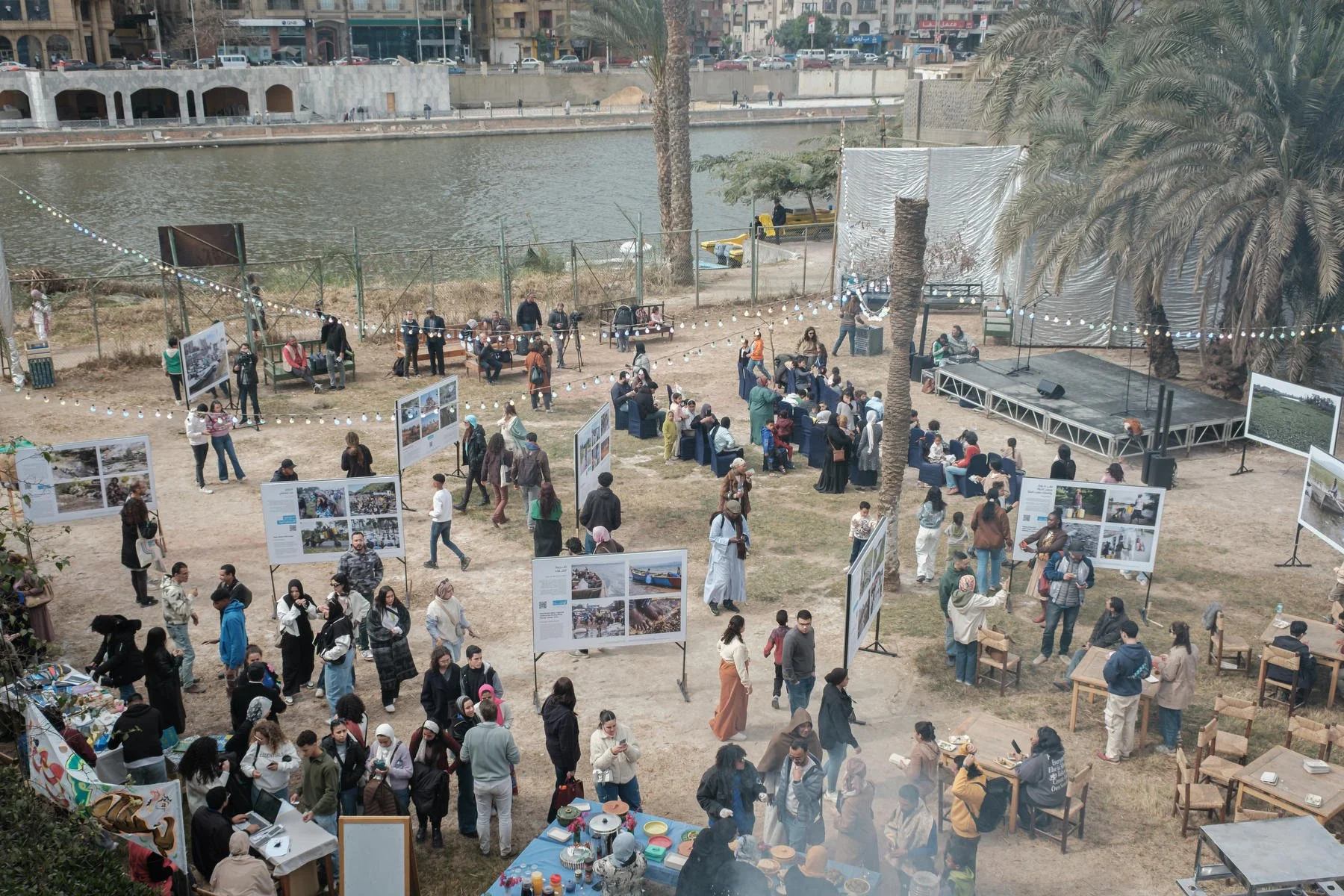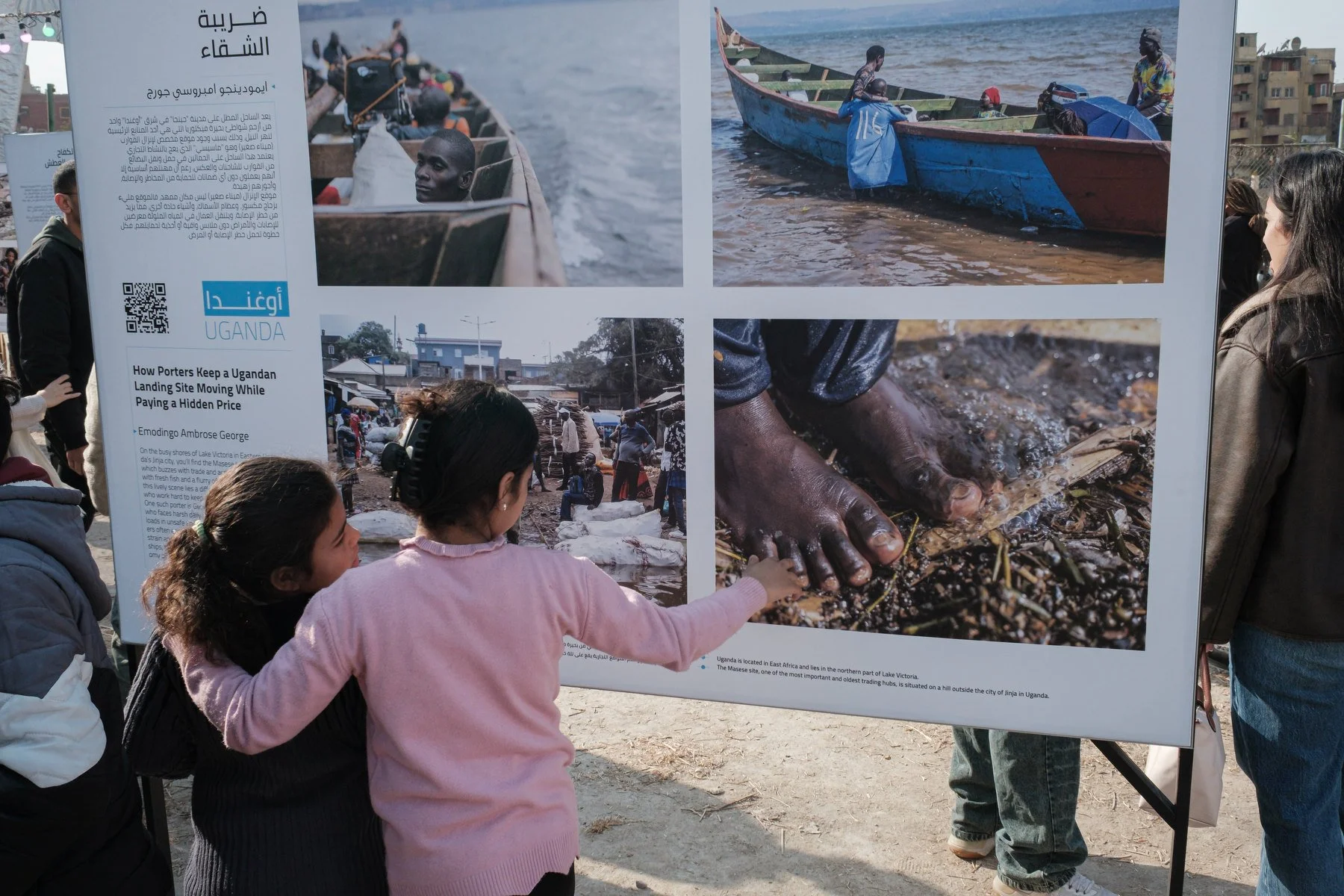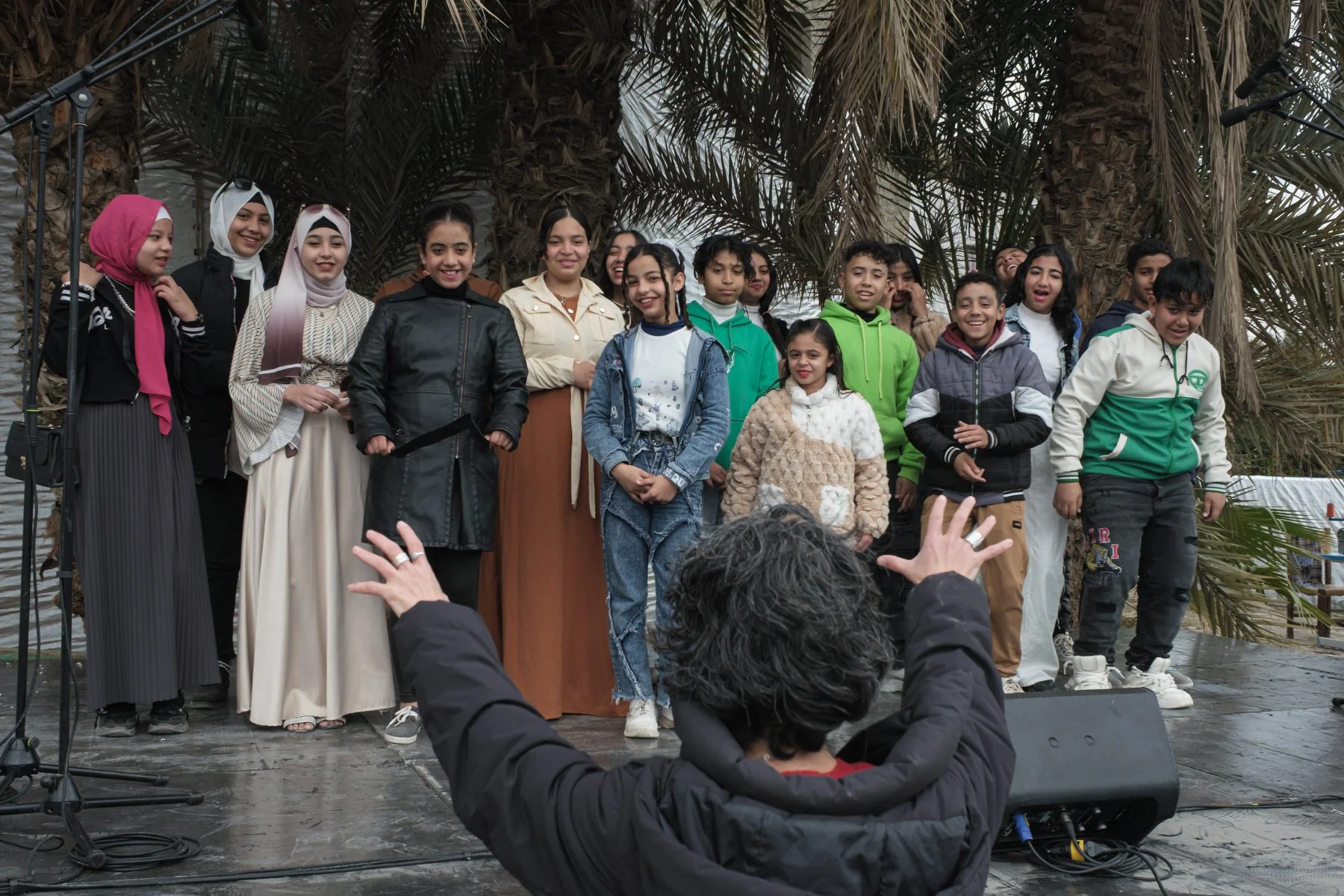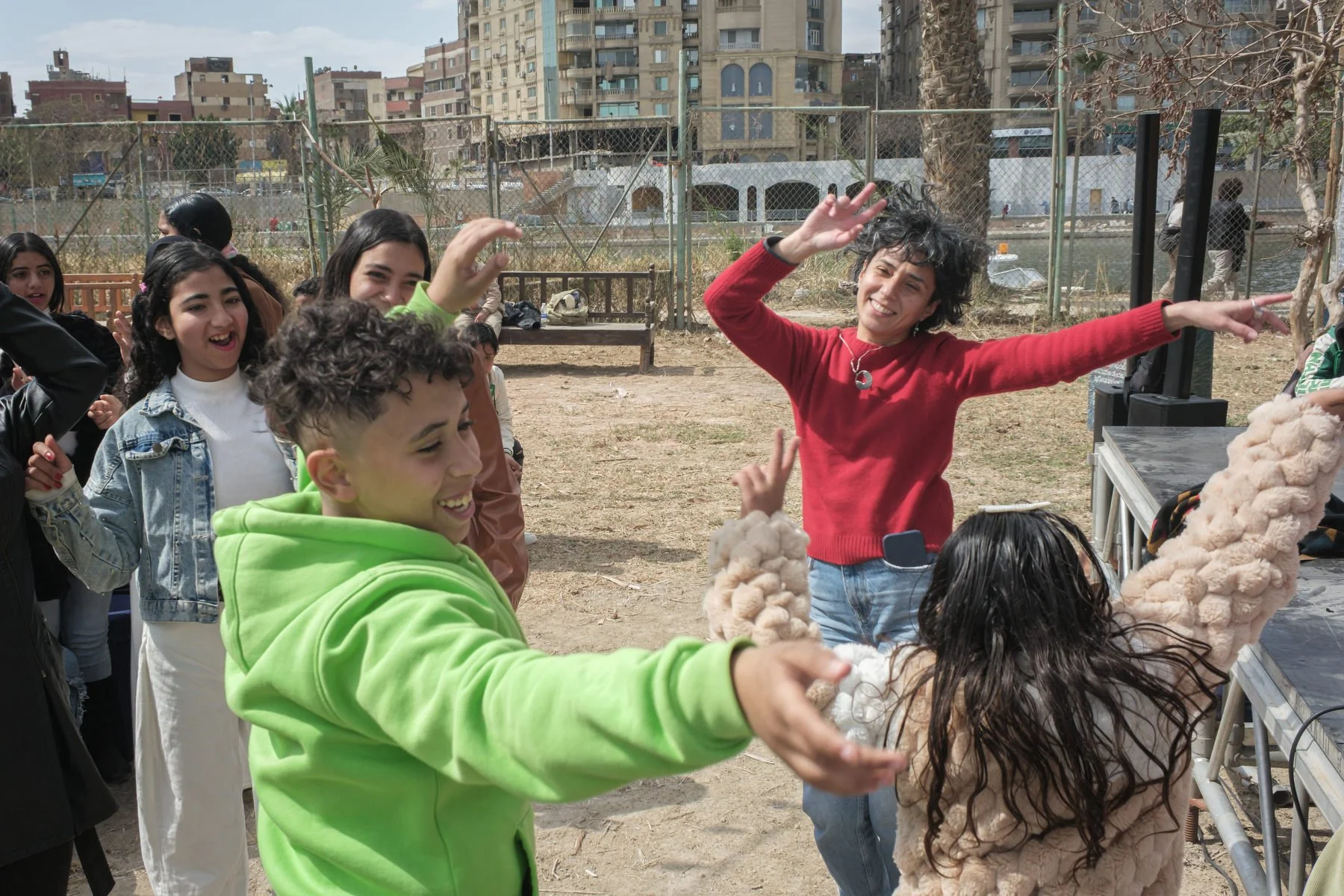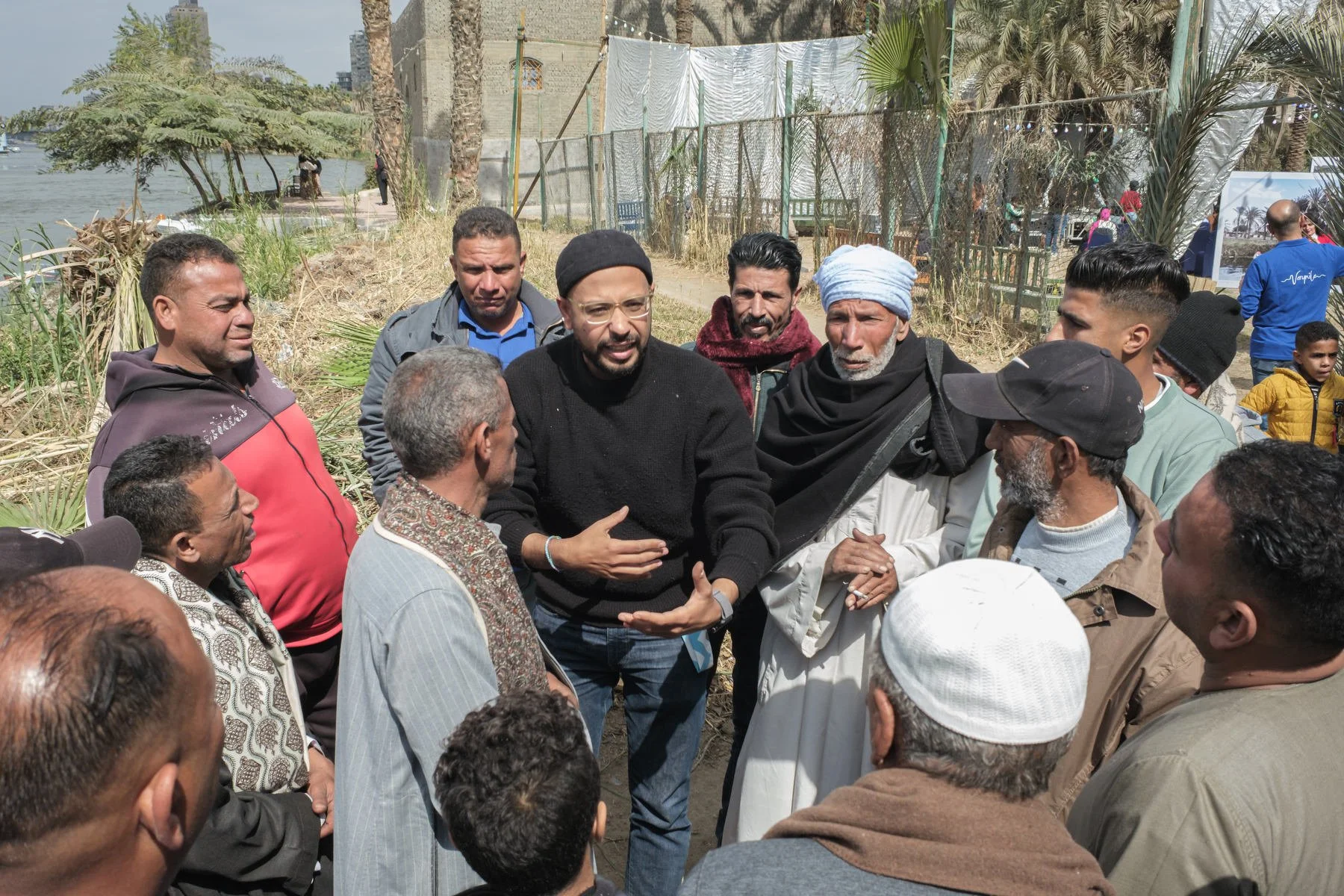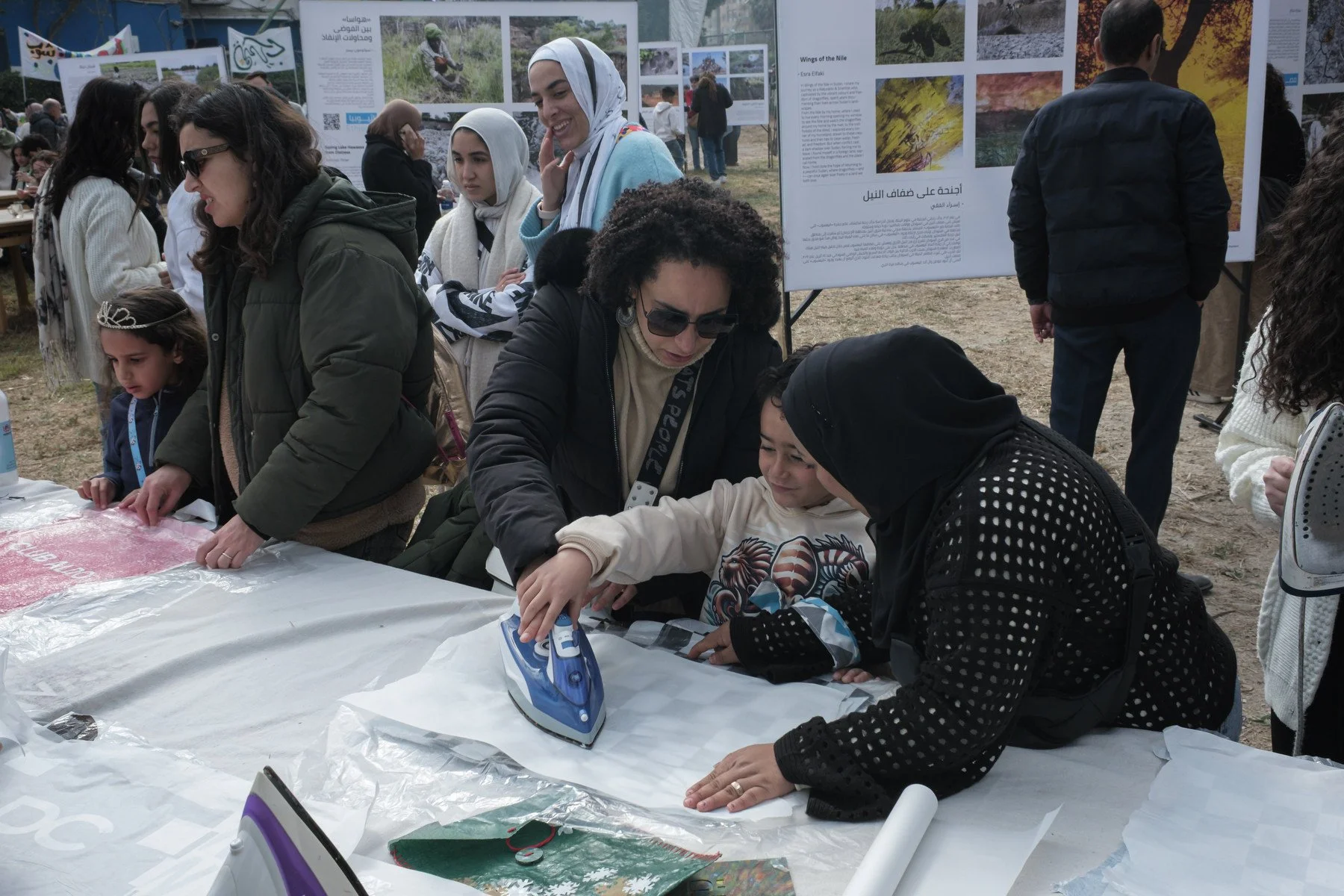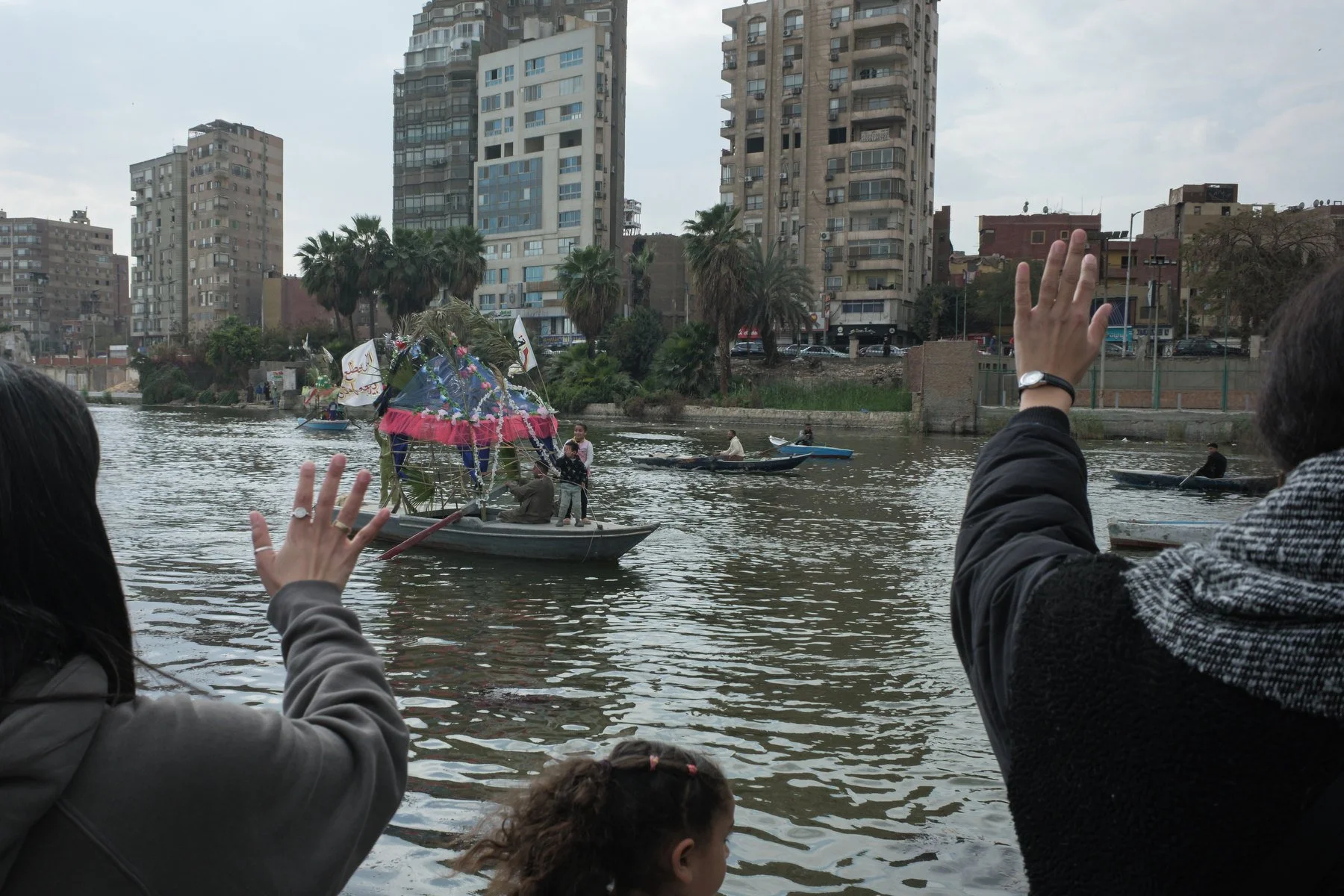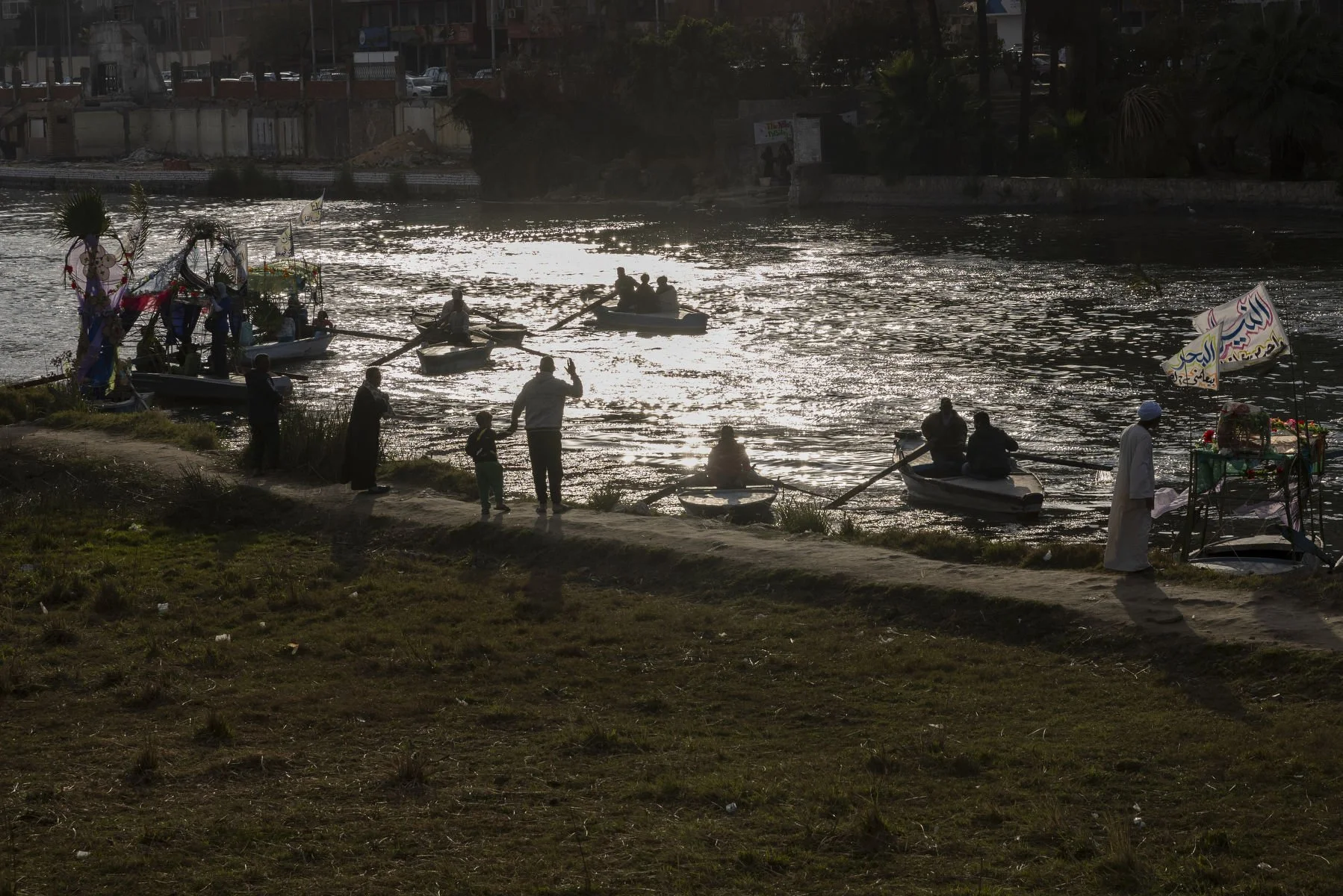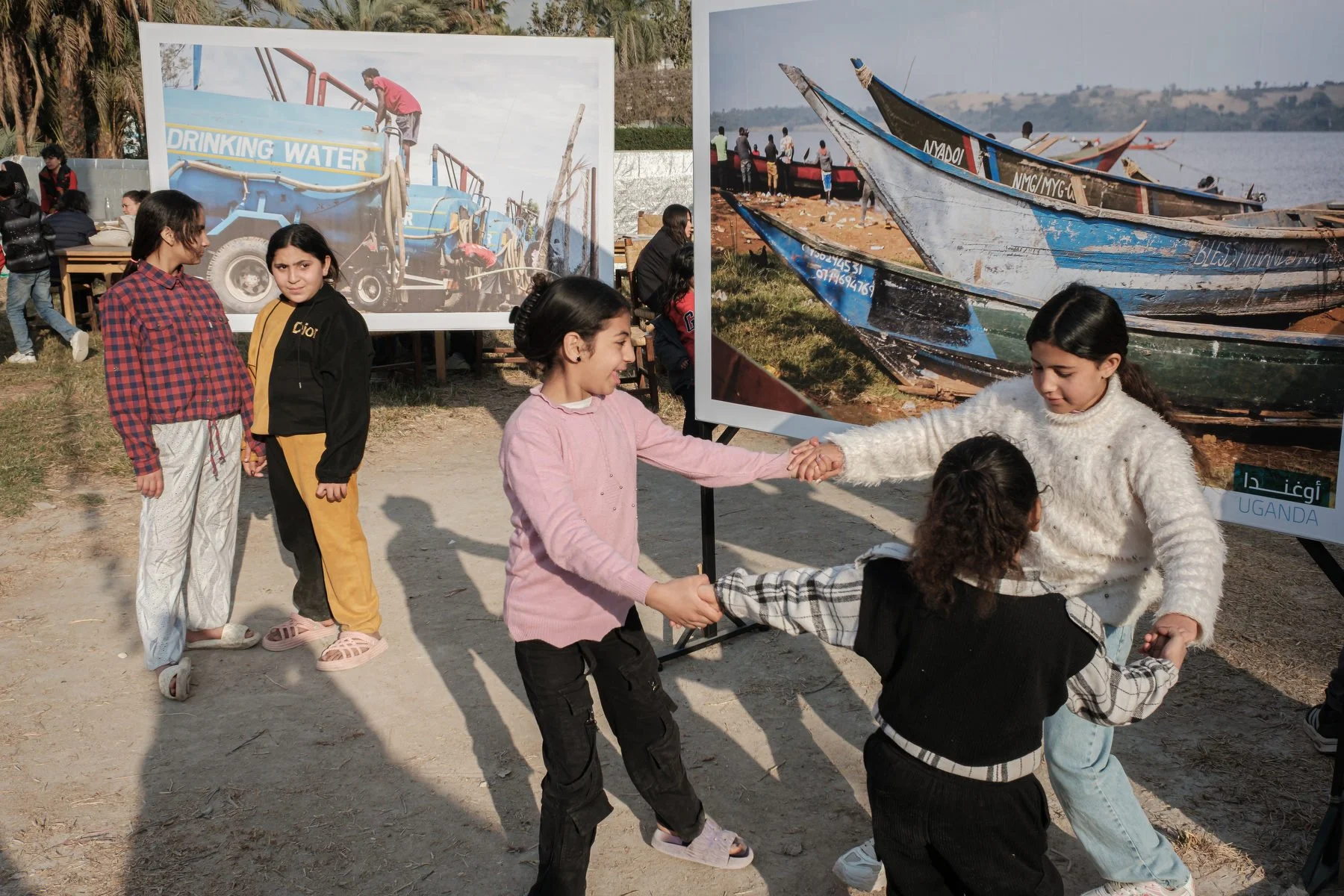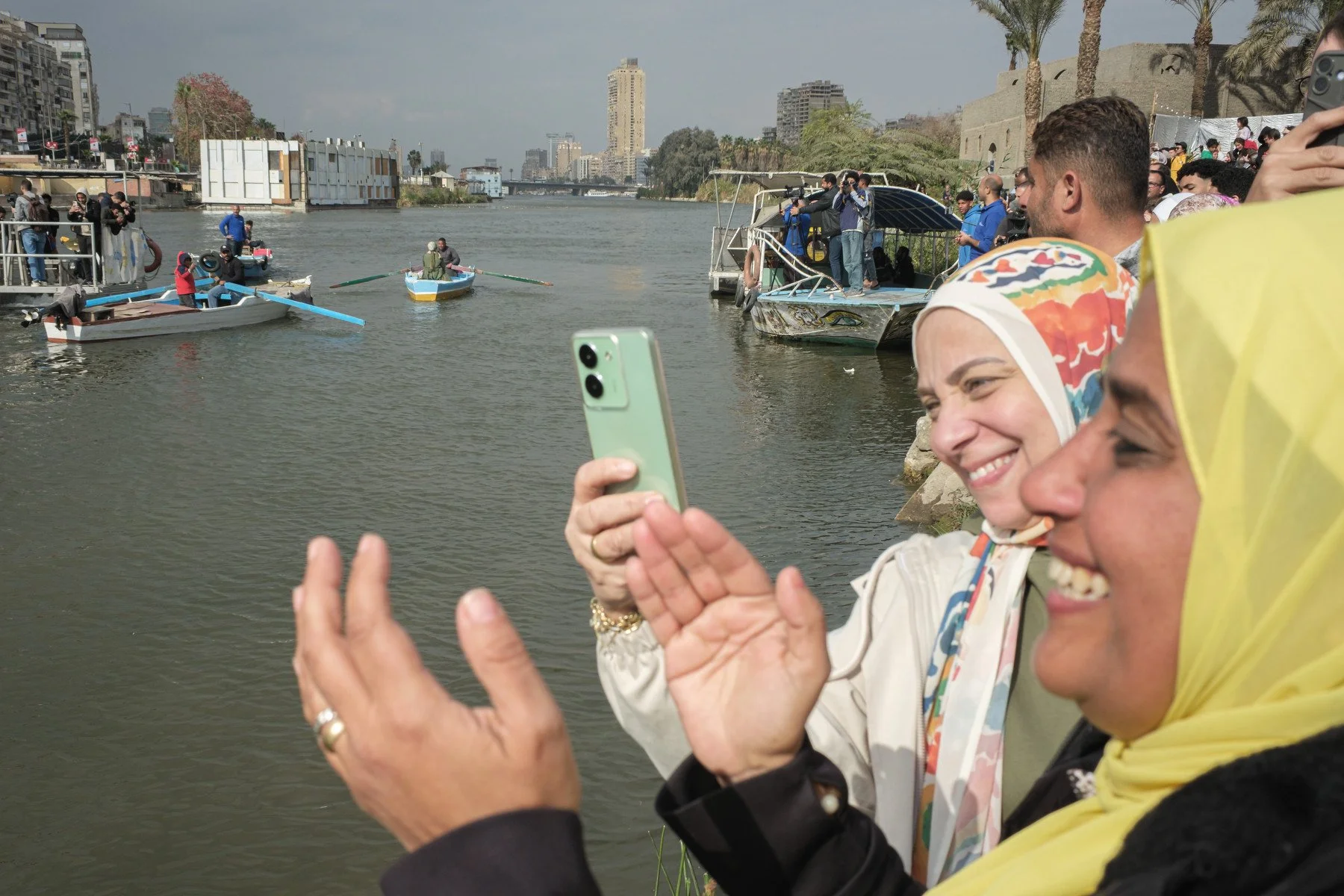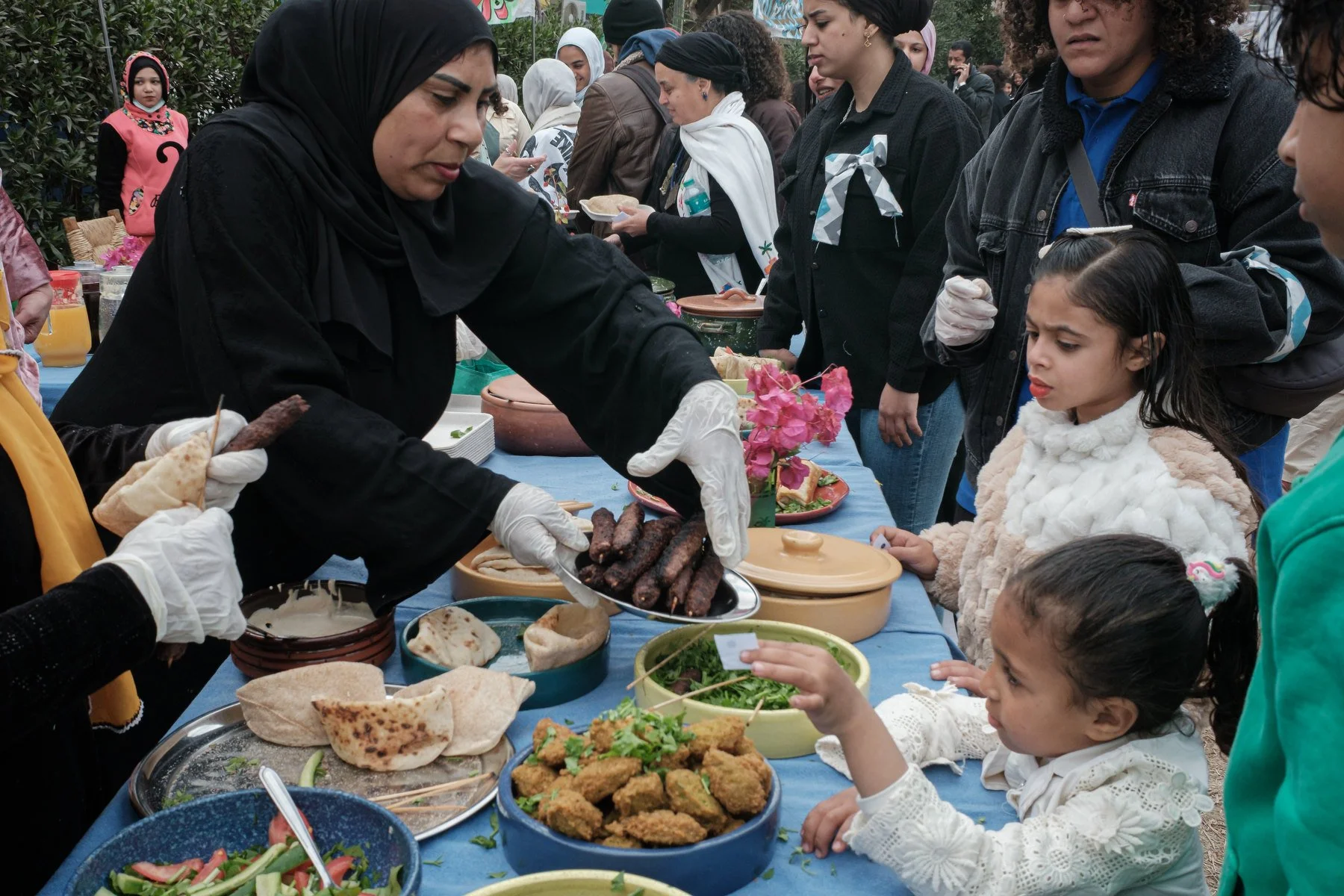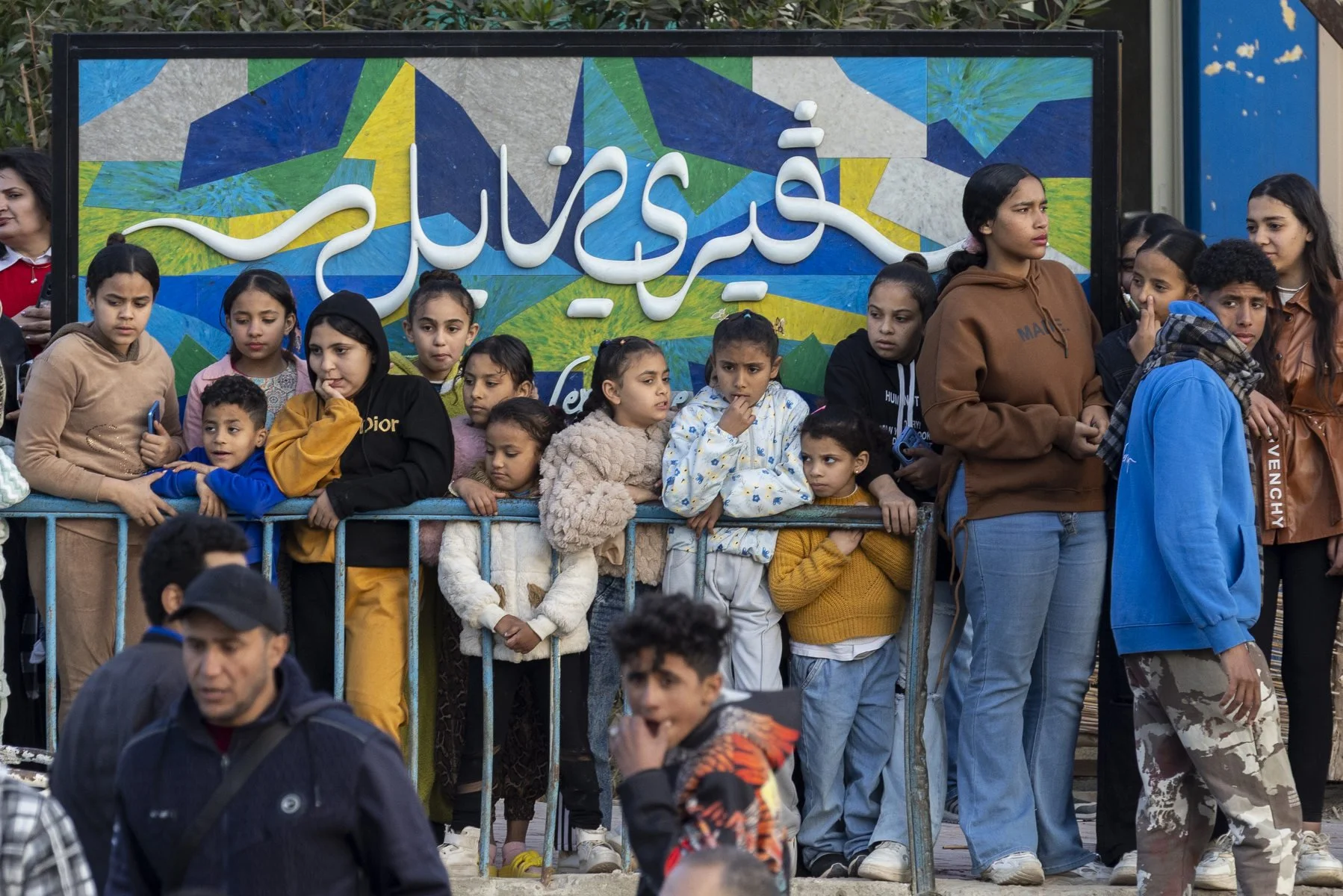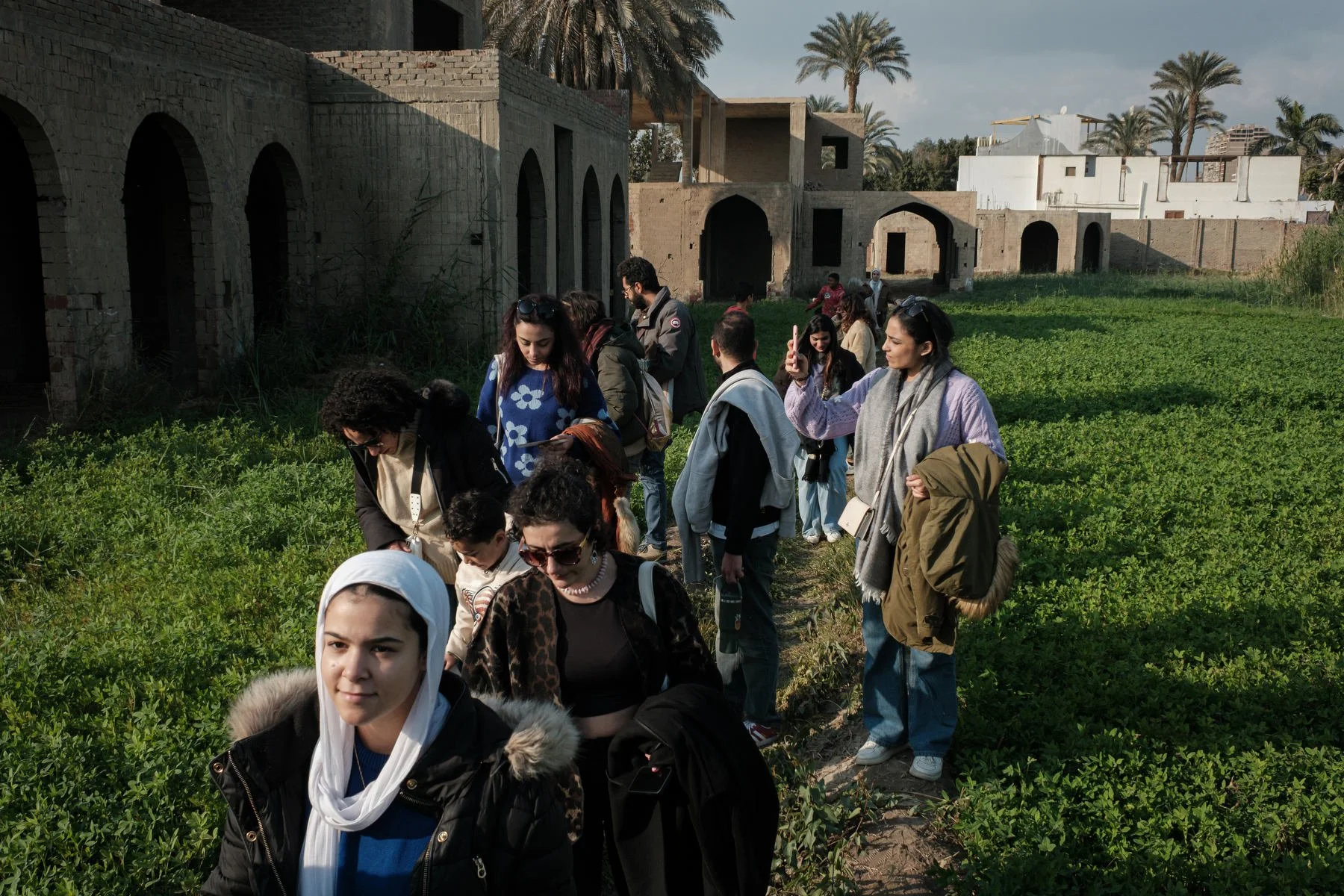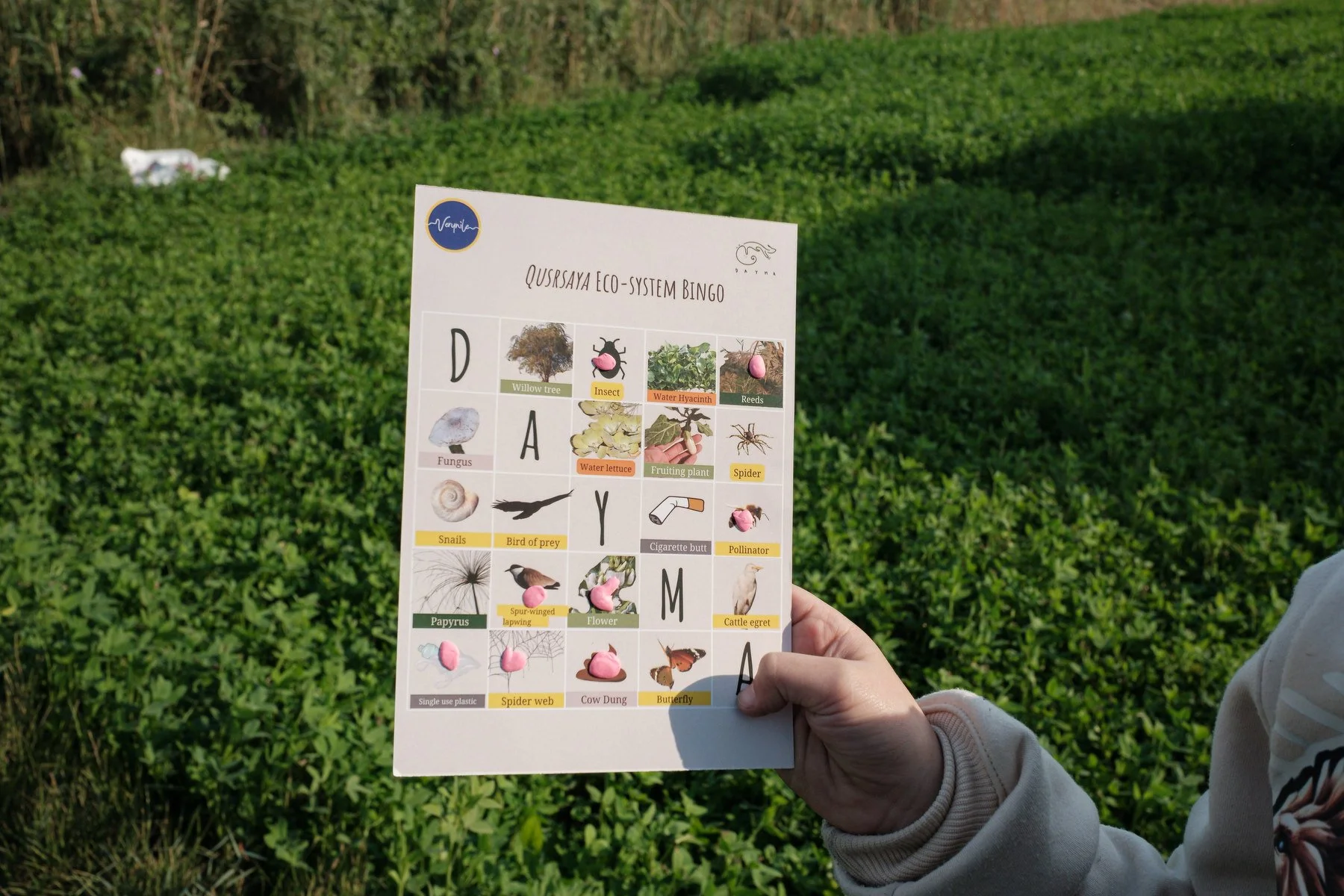
The Nile Parade
Chapter 3 / 2024 - ongoing
The Nile Parade was once an annual ritual held during the flood season, during where people offered gifts to the river. It dated back centuries and faded slowly before the construction of the High Dam. Deeply connected to the myth of the Bride of the Nile, the parade symbolised reverence and renewal.
Inspired by a photograph and guided by my research, I initiated the idea of reviving the Nile Parade – this time as a contemporary celebration, held each year on International Nile Day, February 22. I stepped beyond my role as a photographer to become an organiser, turning an image into a collaboration, and a collaboration into a living ritual and celebration.
The Fete of the Bride of the Nile - 1930
“In the Days of Ramses the Great, More than 3000 Years ago, Egyptians gave thanks to a fruitful harvest by throwing a beautiful virgin into the sacred Nile.
In the reign of the Pharaohs this festival has been held in flood time with the royal barge carrying a sacrifice. When beautiful virgins became so precious to sacrifice, mannequins were substituted.
In recent years mannequins have been given way to a water parade in which the native boats have caught the royal Bardem in popular rejoicing.
This is a big day for the peasants of the Delta and the virgins who are glad to escape being sandwiches for crocodiles. “
“Video narration by British Pathe”
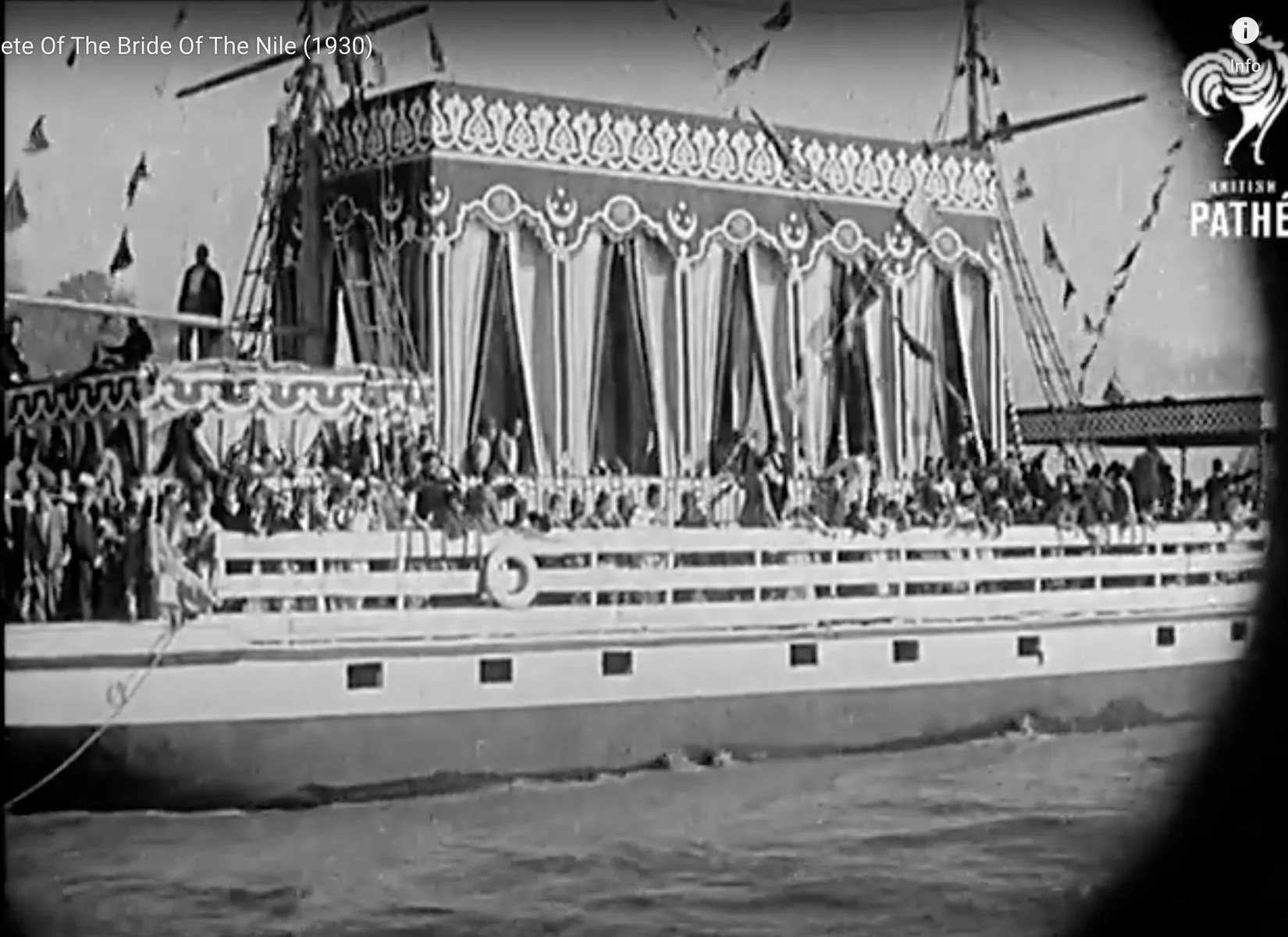
Scenes from the 1930's Nile Parade in Egypt
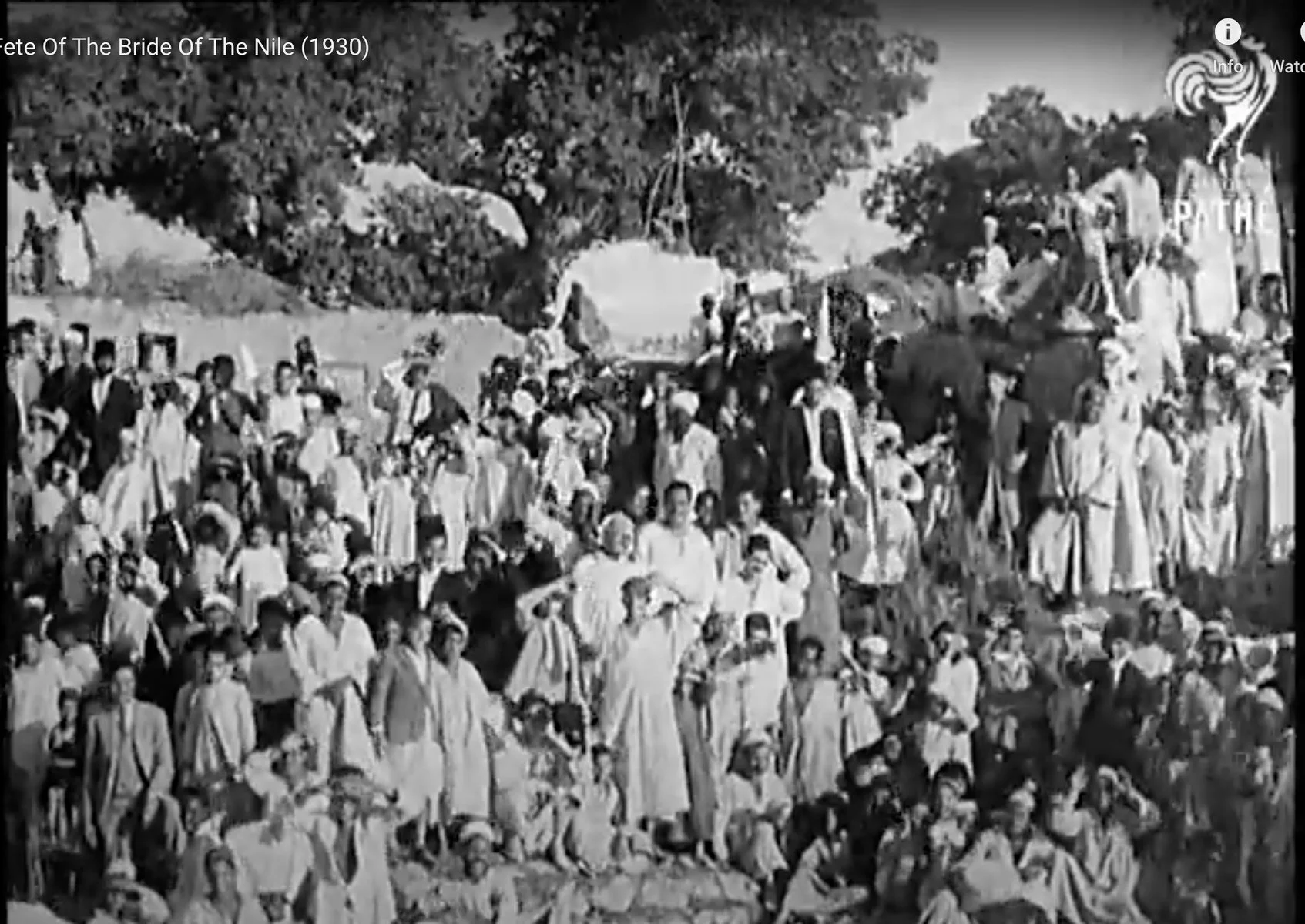


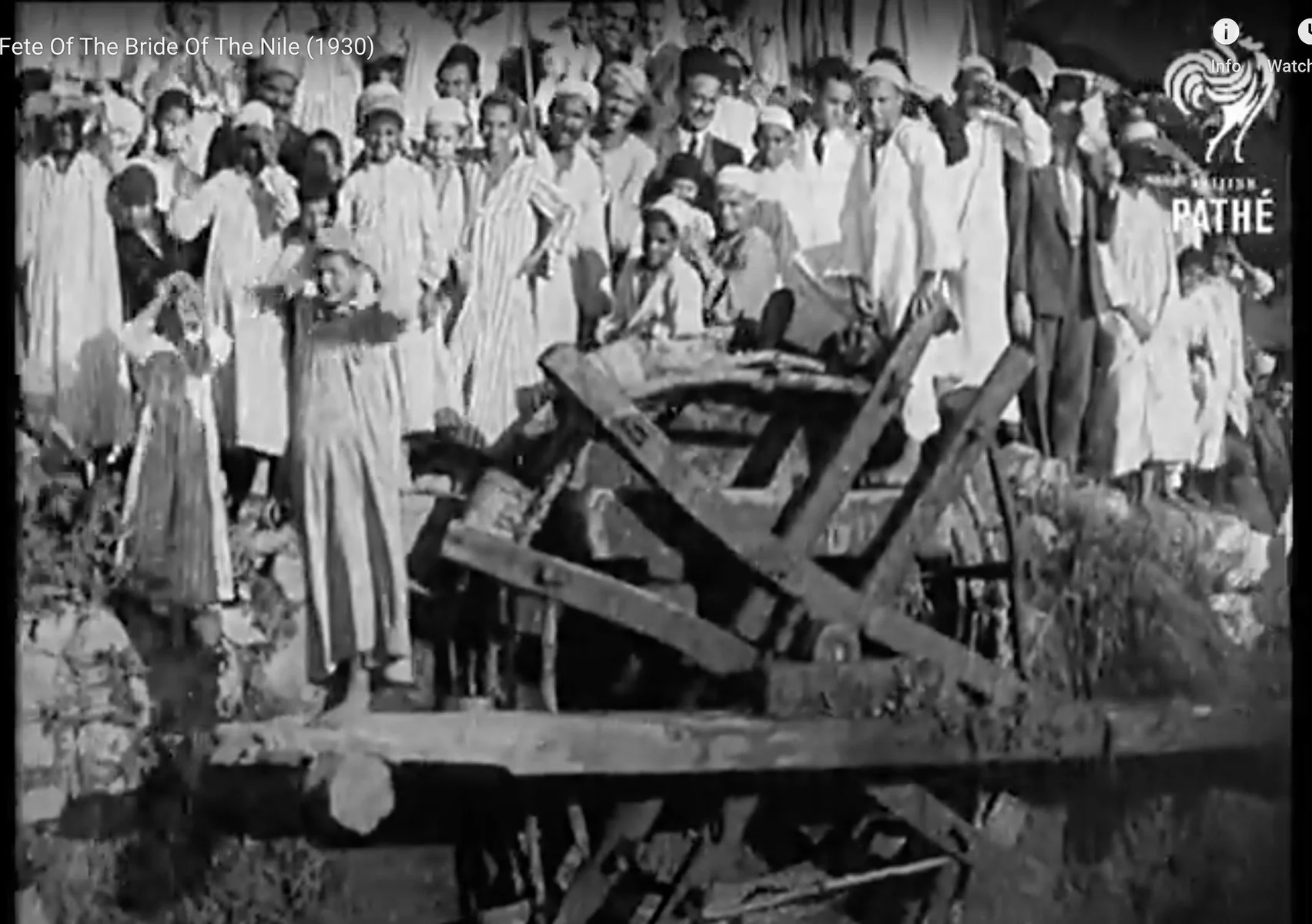
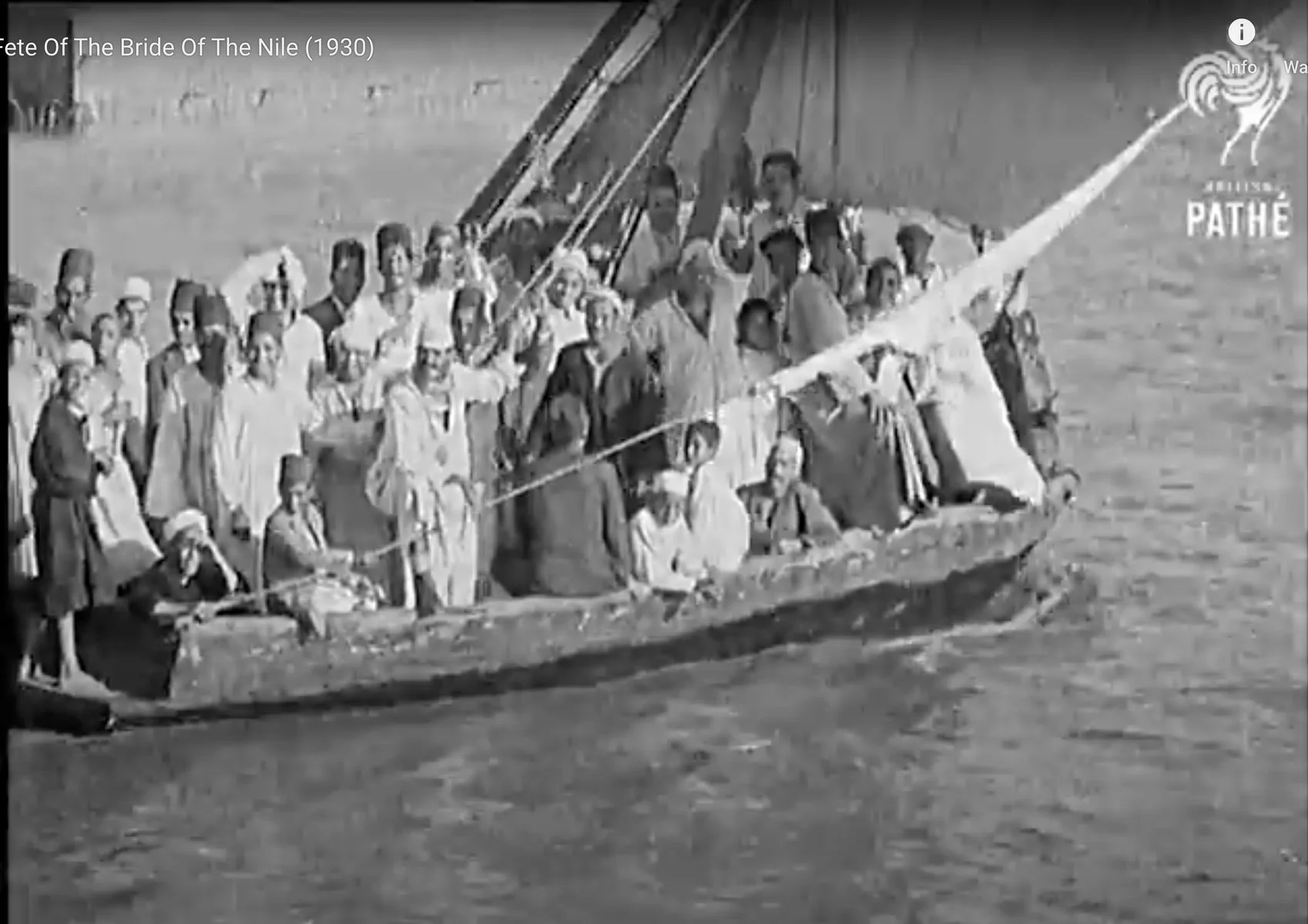
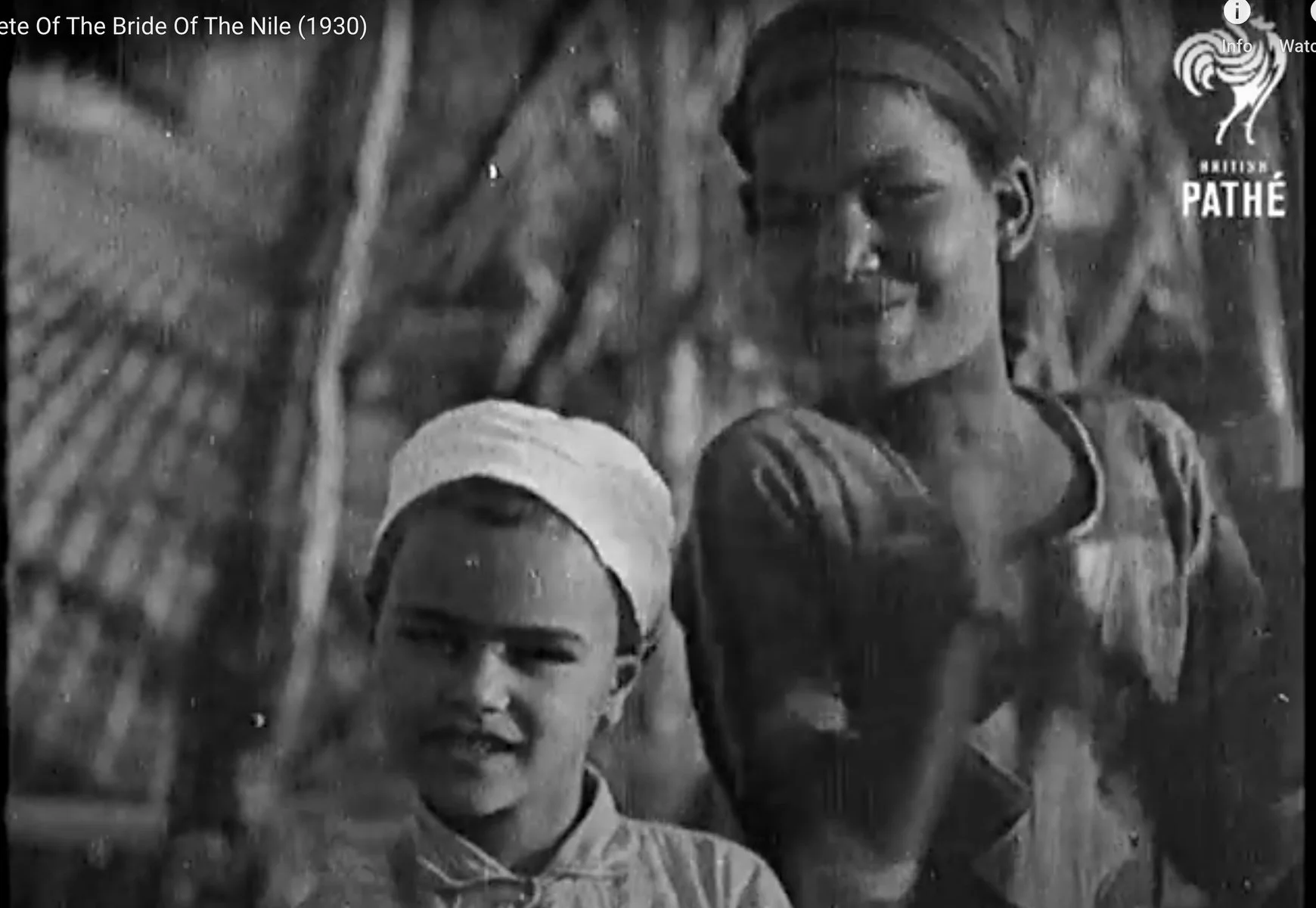
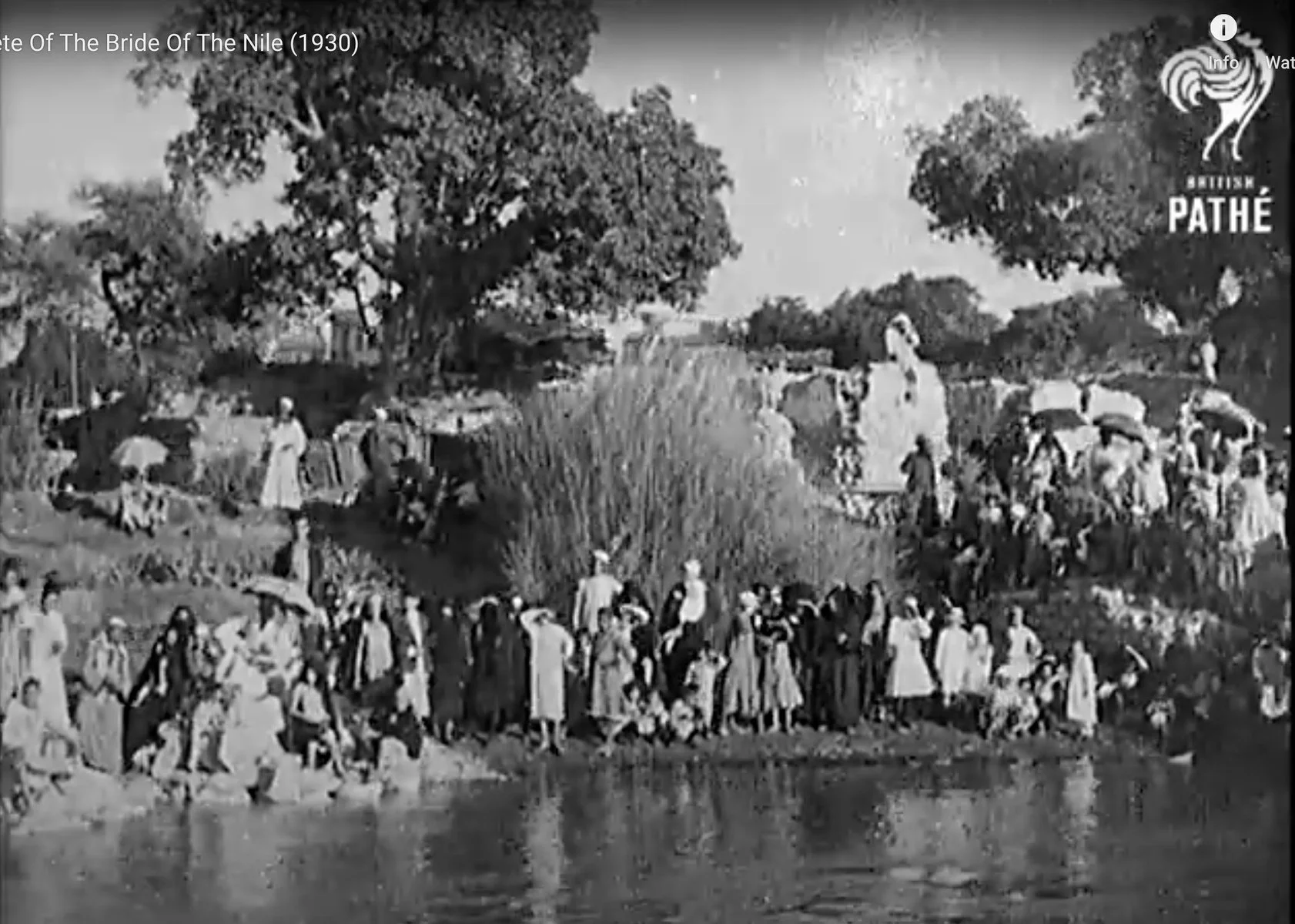
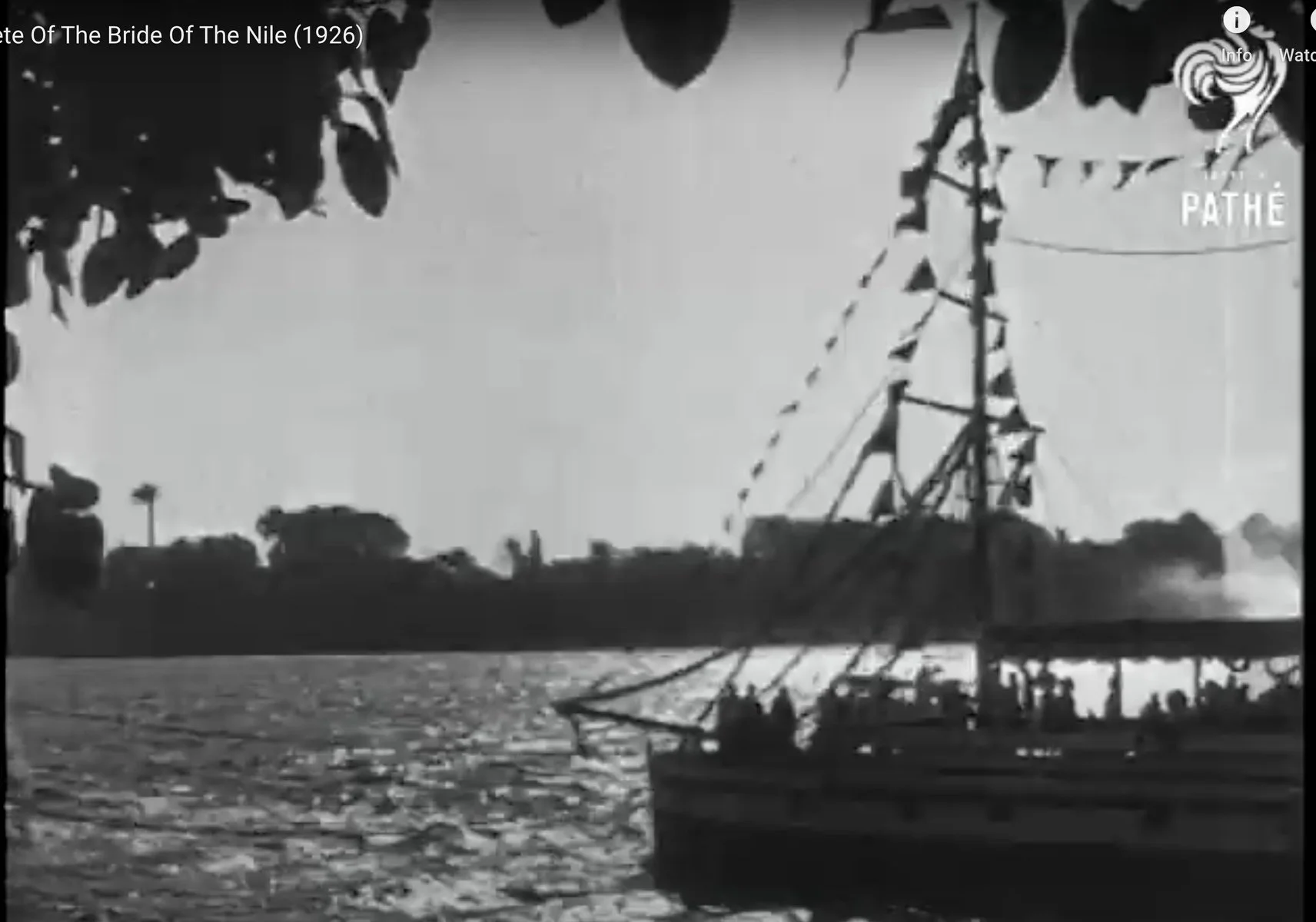
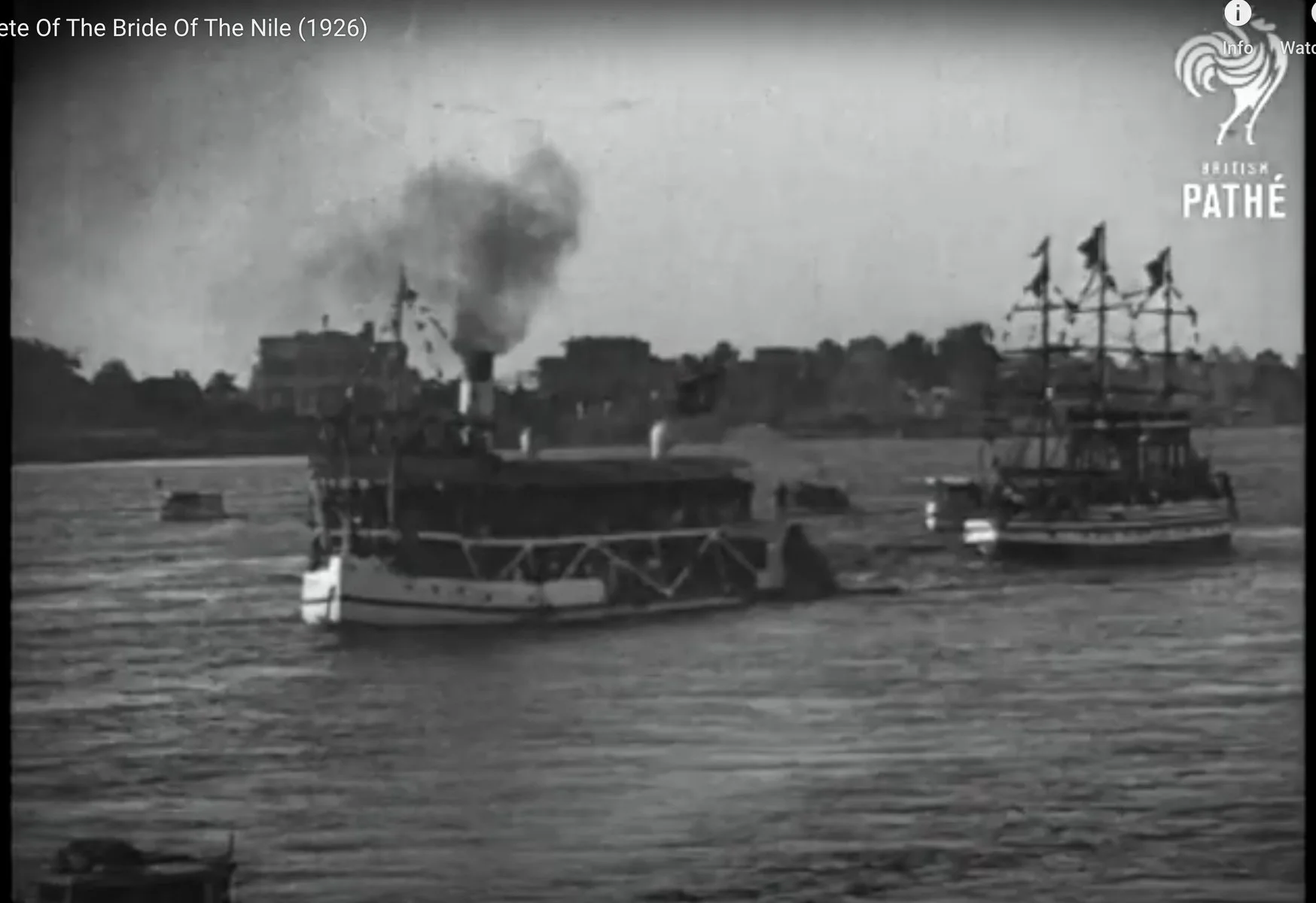
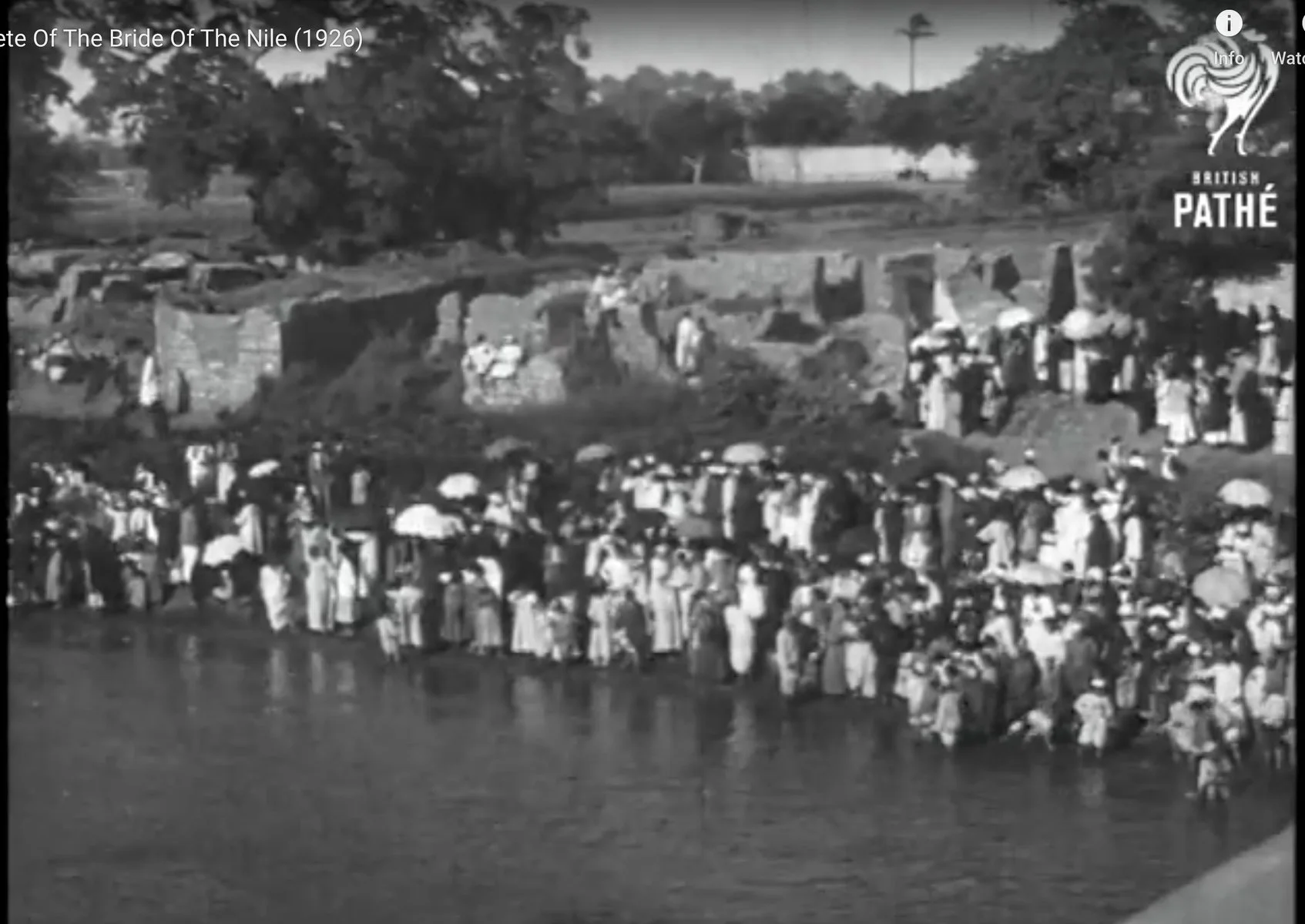
Rituals like the Nile Parade have disappeared, and there is no longer a celebration honoring the river. After watching an old video of the parade, I began to wonder why these traditions faded, and whether they could be revived in a way that fits our time.
I proposed the idea to VeryNile, and despite only having two weeks before International Nile Day on February 22, the team was eager to make it happen. We invited fishermen to join with their boats, asked artist Ammar Abo Bakr to help decorate them, and musician Youssra El Hawwary to lead a workshop with the fishermen’s children to create a song.
We treated it as a small-scale trial, inviting only a few friends, VeryNile staff, and anyone from the island. It was a modest but meaningful first step in reimagining a contemporary celebration of the Nile.
-
" A ritual is the enactment of a myth; by participating in a ritual, you are participating in a myth.”
Joseph Campbell, The Power of Myth

The Nile Day
The Ancient Egyptians celebrated the Nile on August 15, marking the arrival of the annual floods, a life-giving force they depended on. But after the construction of the High Dam in Aswan and the creation of Lake Nasser, the river's flow became regulated, and the floods stopped being an urgent concern. That shift may explain why the old flood rituals faded away today; even if the floods don’t come, the reservoir can sustain us for a while.
Instead, we now celebrate Nile Day on February 22, a date marking the 1999 meeting in Dar es Salaam, Tanzania, where the Nile Basin Initiative was founded. It laid the groundwork for cooperation among the 11 Nile Basin countries. Since 2007, Nile Day has been observed across the region. It made perfect sense to choose February 22 as the date for the Nile Parade, aligning our revival of the ritual with today’s shared vision for the river.
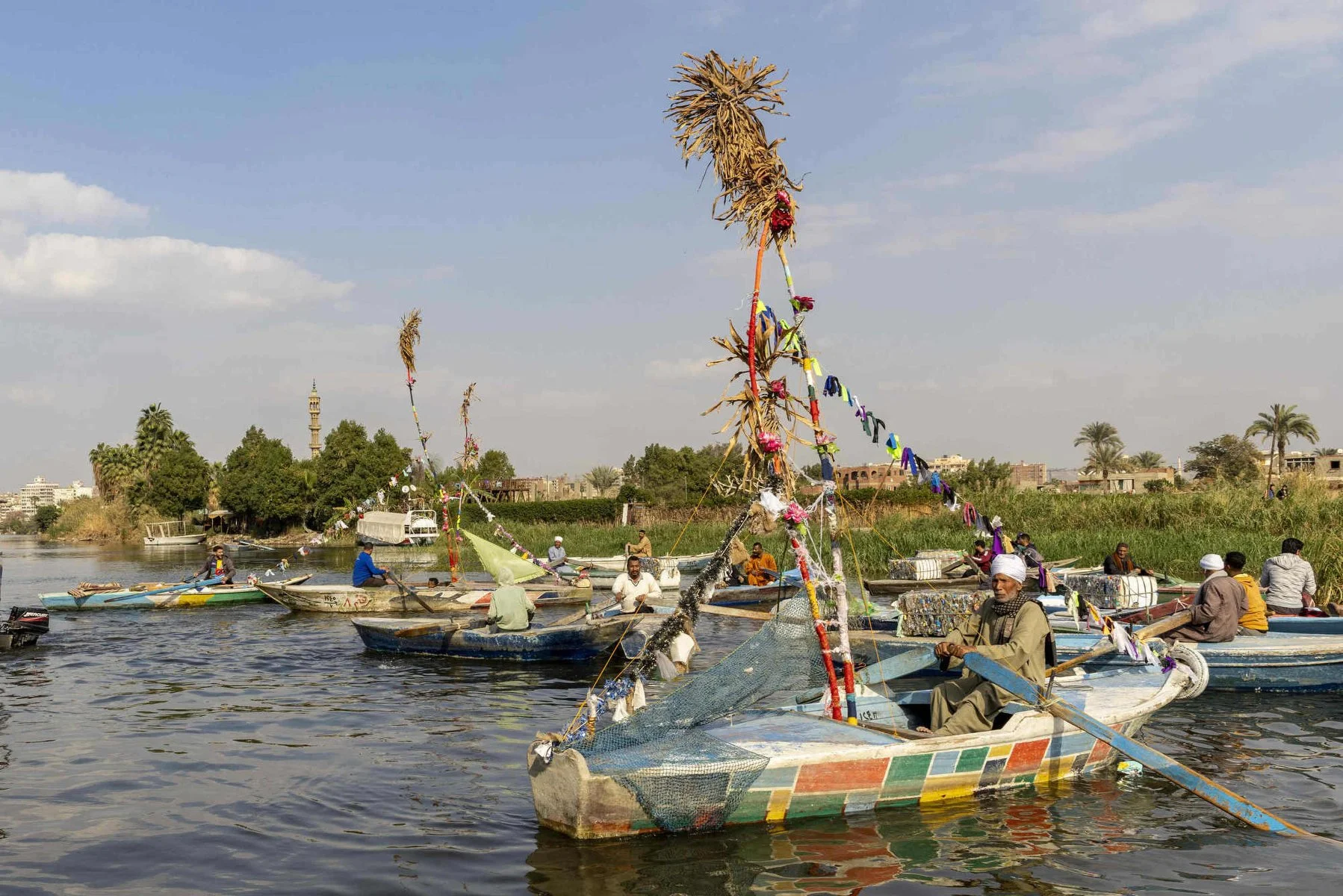
In 2024, the first Nile Parade, organised with the fishermen of Qursaya Island and the VeryNile initiative, twenty fishermen joined with their boats, and together we decorated them before setting off on a parade around Qursaya Island. Accompanied by a marching band, we moved along the Nile, passersby and island residents were watching and cheering as the parade passed by, Cairo, 22nd Feb 2024
The Music Workshop with the “Kids of the Nile”
While planning the parade, we saw an opportunity to weave music and the children of the island’s voices into the celebration.
The “Kids of the Nile”, a group of children from families of women and fishermen on Qursaya Island, regularly gather to learn skills such as art, crafts, and creative expression at VeryNile. We invited Egyptian singer Youssra El Hawwary to lead a two-day workshop with them.
In just 48 hours, they wrote and composed a song titled “Our Home Is on the Nile.” At the parade, the children performed it for the very first time—standing proudly in front of their families and the small audience attending the event. For many, it was their first time performing in front of a crowd.
Our home is on the Nile, and we rejoice,
The birds' calls, our music, our adventures,
Oh, my grandfather, who knew every
fish's haunt, Oh, palm trees, guiding me
home,I ponder, my friends if our lives here
will persist, And if it’s in our hands,
we will make our Nile great.
For our home is on the Nile,
For our home is on the Nile."
بيتنا جنب النيل، واحنا فرحانين
صوت طيوره وأغانينا،وفسحتنا في المشاوير
ياجدي يامعلمني، كل سمكة مكانها فين
يانخلة ياللي عارفة طريق بيتي منين
ياترى يأصحابي، هانفضل هنا عايشين
ولو بإيدينا نخلي نيلنا عظيم
ده بيتنا جنب النيل
ده بيتنا جنب النيل
The first Nile Parade came to a successful close, and we were all happy that it actually happened. At the end of the day, we gathered with the fishermen for a small conversation about the challenges they face on the Nile. Surprisingly, pollution wasn’t seen as their biggest concern. Some even underestimated its role in the decline of fish stocks, believing that since the Nile is a running river, everything harmful eventually flows away. “It all moves with the water,” one fisherman told me.
That moment challenged my assumptions. But it also reminded me that in collaborative work, you won’t always hear what you want or expect. It made me think about how to approach it next time in a way that gives the fishermen a stronger voice, and ensures they’re not just participants or executors, but true co-creators of the Nile Parade.
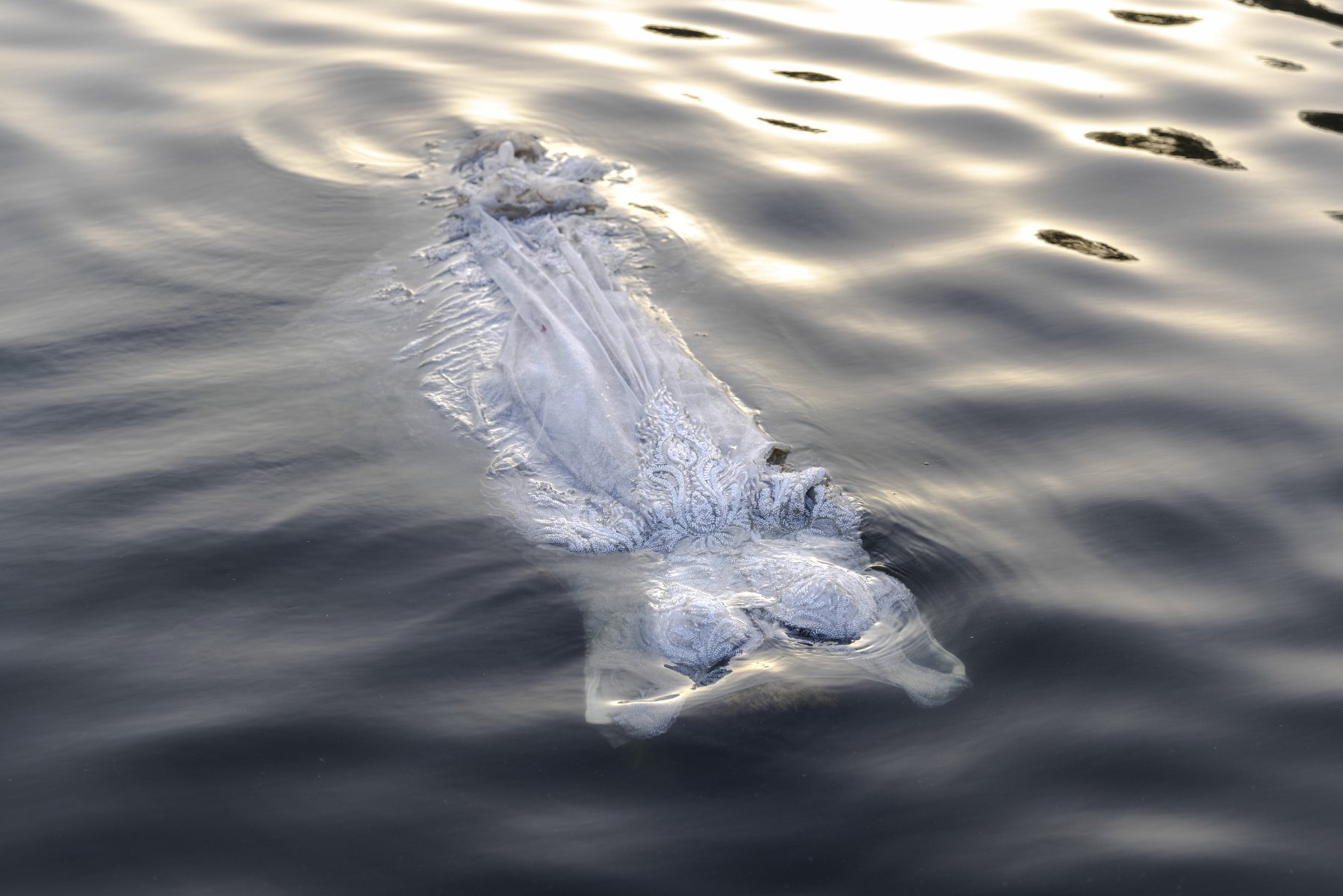
A few weeks after the first Nile Parade, I was still processing everything that had happened, how an idea had become real. I went to visit Saber, one of the fishermen who took part in the parade and someone I’ve been working with on my film. Saber is known on the island for his unique way of fishing, diving into the water and catching fish with his bare hands.
We took a boat ride together. I brought along the wedding dress we had used in the parade decorations. Laughing, he asked, “Is that the Bride of the Nile’s dress?” I joked, “Yes. Do you think the Bride of the Nile could help solve the Nile’s problems today?”
He responded, not joking anymore: “What can the Bride of the Nile do about all this? Not even a hundred brides can fix the problems we’re facing now.”
As the sun began to set and we continued riding quietly on the water, he broke the silence:
“You know, the parade, it was really joyful. We were happy.”
I asked: but do you think we can do it again?
“Yes. We can do it next year. People will be happy. And it will make us happy, too.” Saber responded.
Fishermen Workshops
The two workshops held in preparation for the Nile Parade were designed not just to involve the fishermen as participants, but as co-creators of the event. The aim was to move beyond simply creating a beautiful scene of decorated boats on the Nile, and instead open up a space where the fishermen could share their perspectives, experiences, and visions of the river they live with every day. It’s always fascinating to see what emerges when genuine conversation is encouraged — when we ask, listen, and reflect.
During the first workshop with rural sociologist Saker El Nour, he asked: “What is your most memorable moment on the Nile?” One fisherman answered, “I once caught a fish that weighed 15 kilos. That was many years ago.” This sparked a wave of memories, and soon everyone was sharing stories of their biggest catches, which naturally led into a discussion about the different fish species in the Nile, some still present, others now gone.
In the second workshop, led by social researcher Yasmine Hussein, we introduced drawing exercises to explore how the fishermen see the Nile through their own eyes. Out of 30 participants, at least 8 drew the Nile dredger, a large industrial boat used to remove sediment from the bottom of the river, which they view as the biggest threat to fishing in Qursaya. To them, it destroys fish eggs and habitats, preventing fish from reproducing, while failing to truly clean the river. That may be their own perspective, but isn’t it important to hear and understand it?
Others drew images of pollution, abundant catches, or quiet everyday scenes along the river. We concluded with a brainstorming session, gathering their quotes and messages about the Nile. These words would later be painted onto large flags and displayed on their boats during the Nile Parade, so their voices could be seen and heard by everyone present
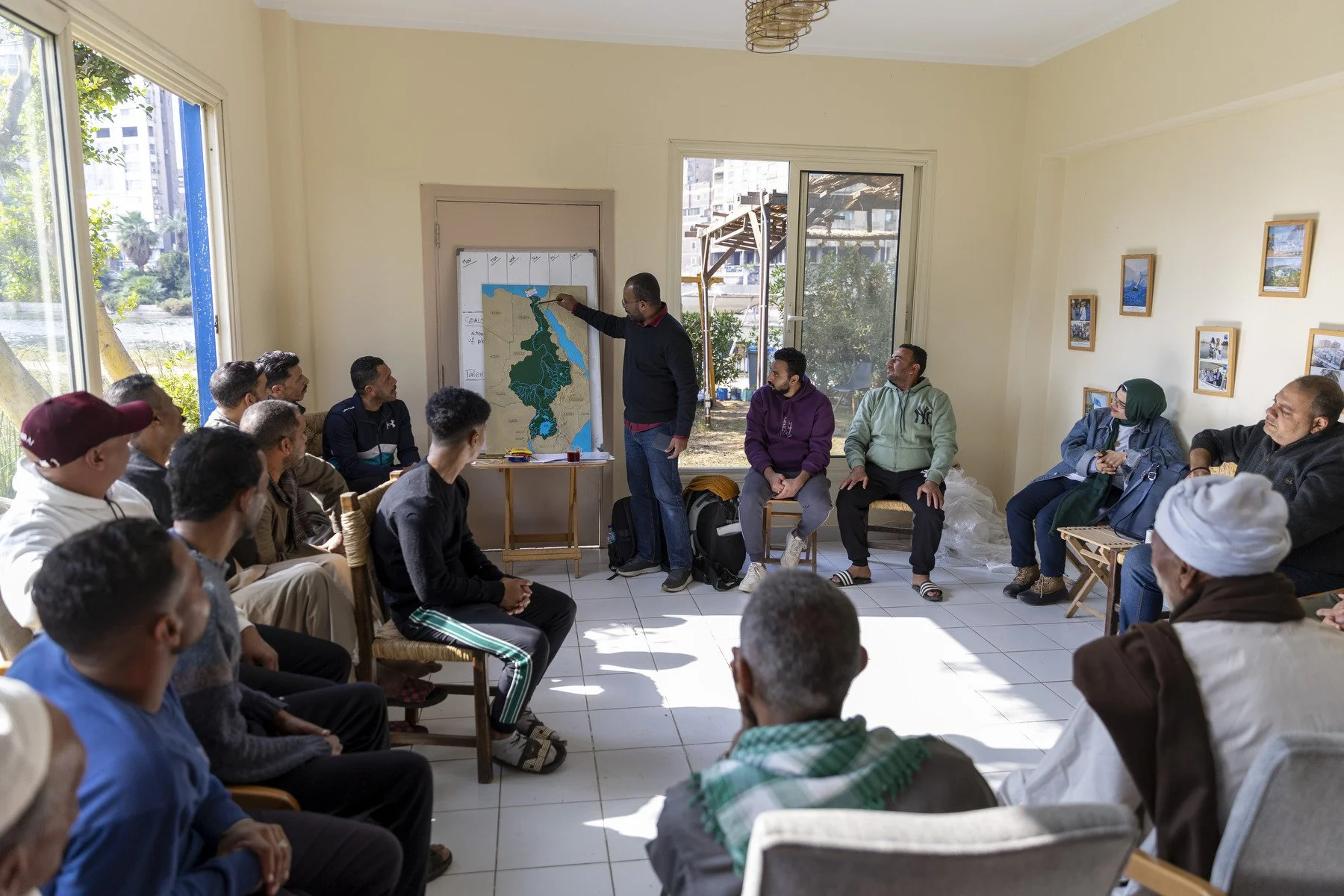
Urban sociologist Saker El-Nour with fishermen of Qursaya island during the first workshop as part of the preparations for the 2025 Nile Parade
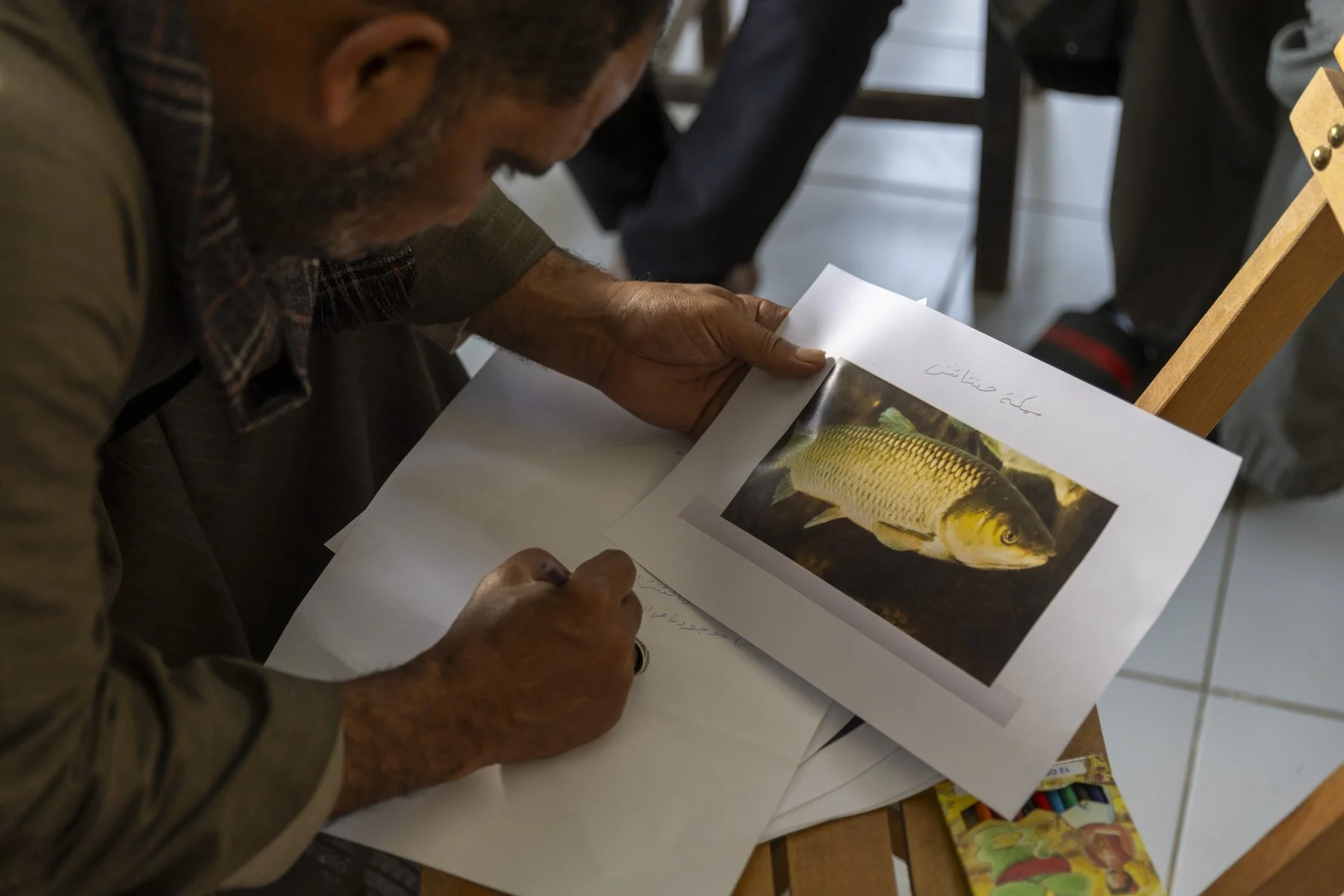
During the workshop, fishermen took part in an exercise to identify different fish species found in the Nile, trying to bridge their traditional knowledge with shared learning
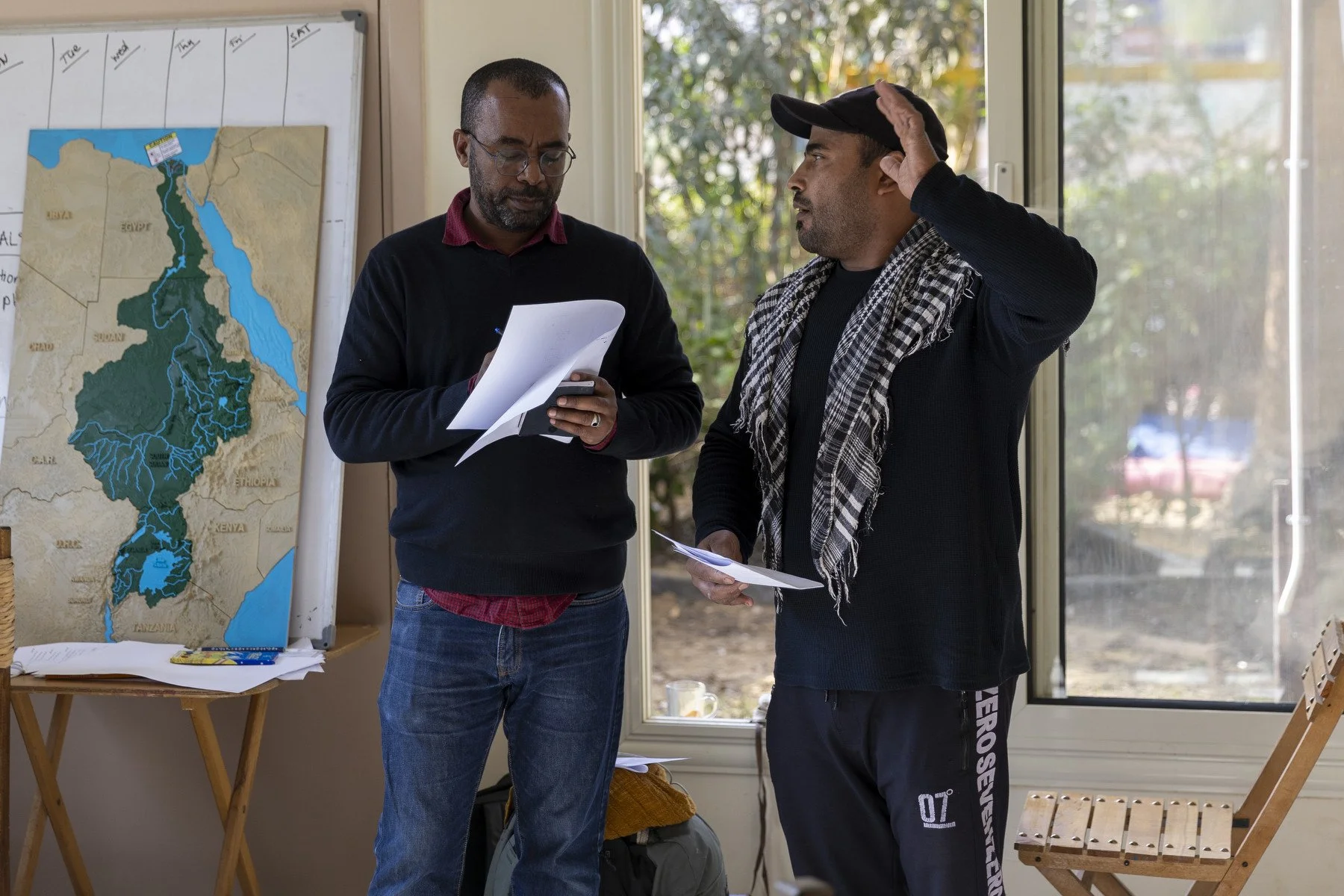
Urban sociologist Saker El-Nour in a discussion with one of the fishermen of Qursaya island during the first workshop as part of the preparations for the 2025 Nile Parade
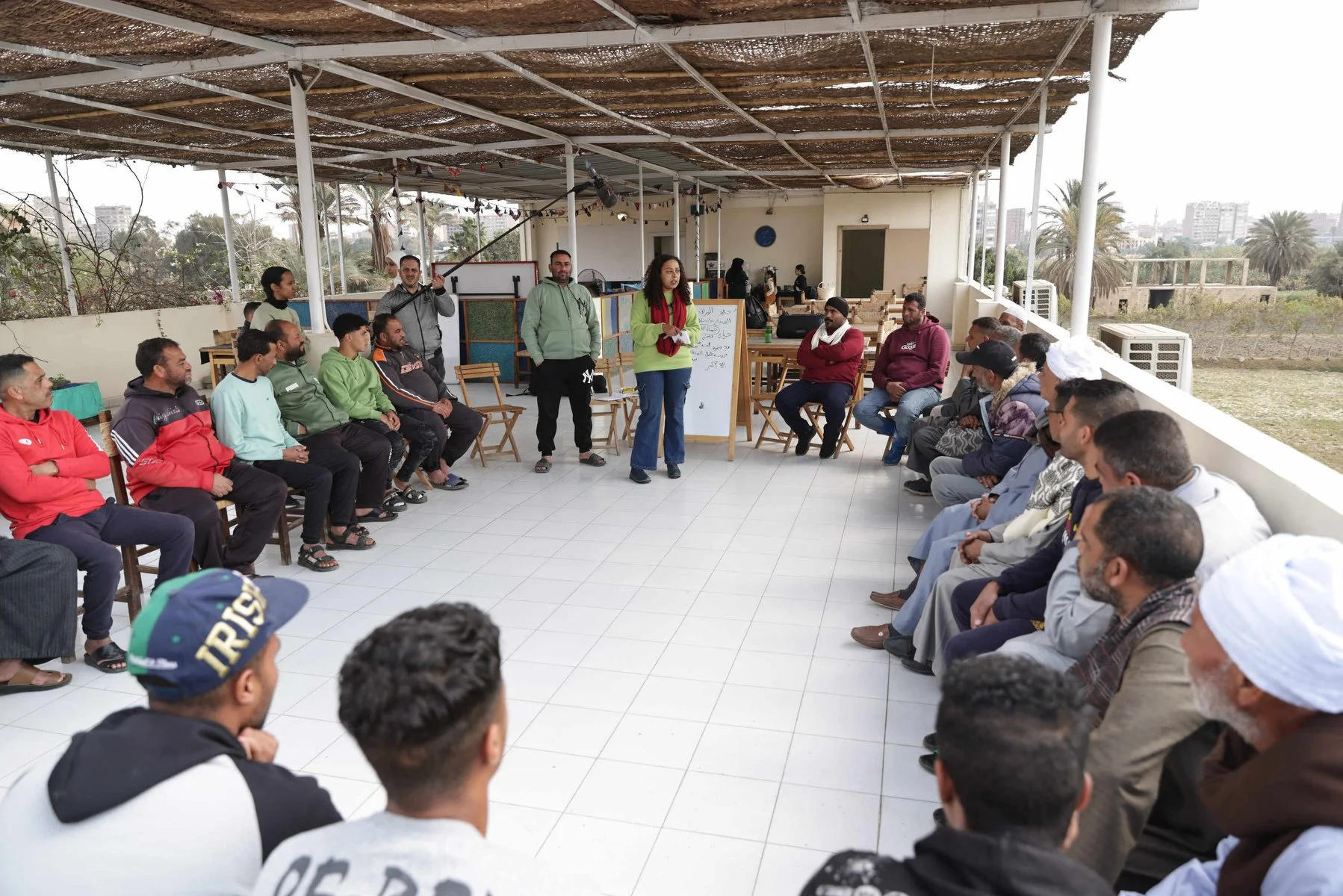
Researcher Yasmine Hussien with 30 of the fishermen of Qursaya during the second workshop to prepare for the 2025 Nile parade
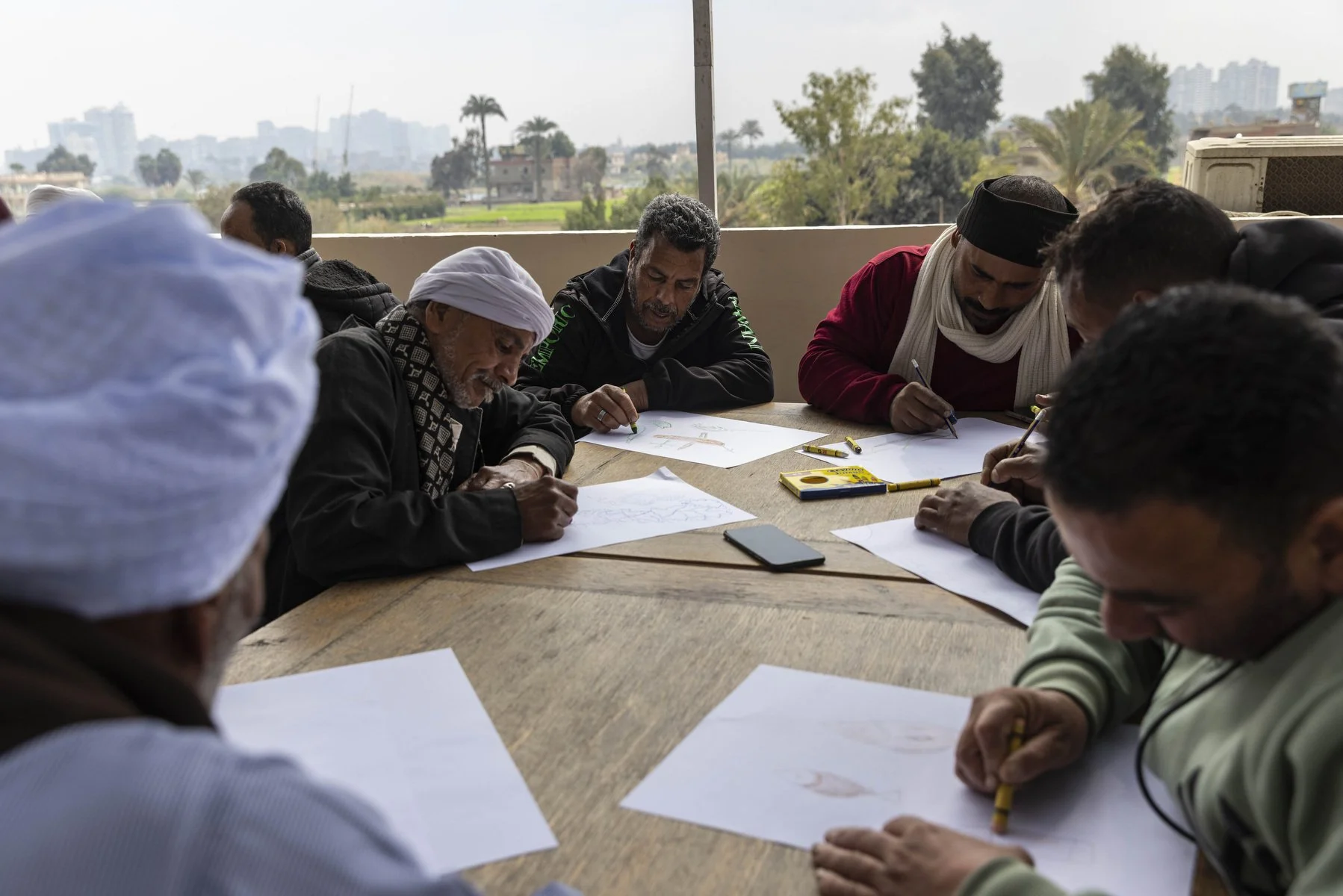
Fishermen of Qursaya participate in a drawing exercise during the second workshop to prepare for the 2025 Nile Parade
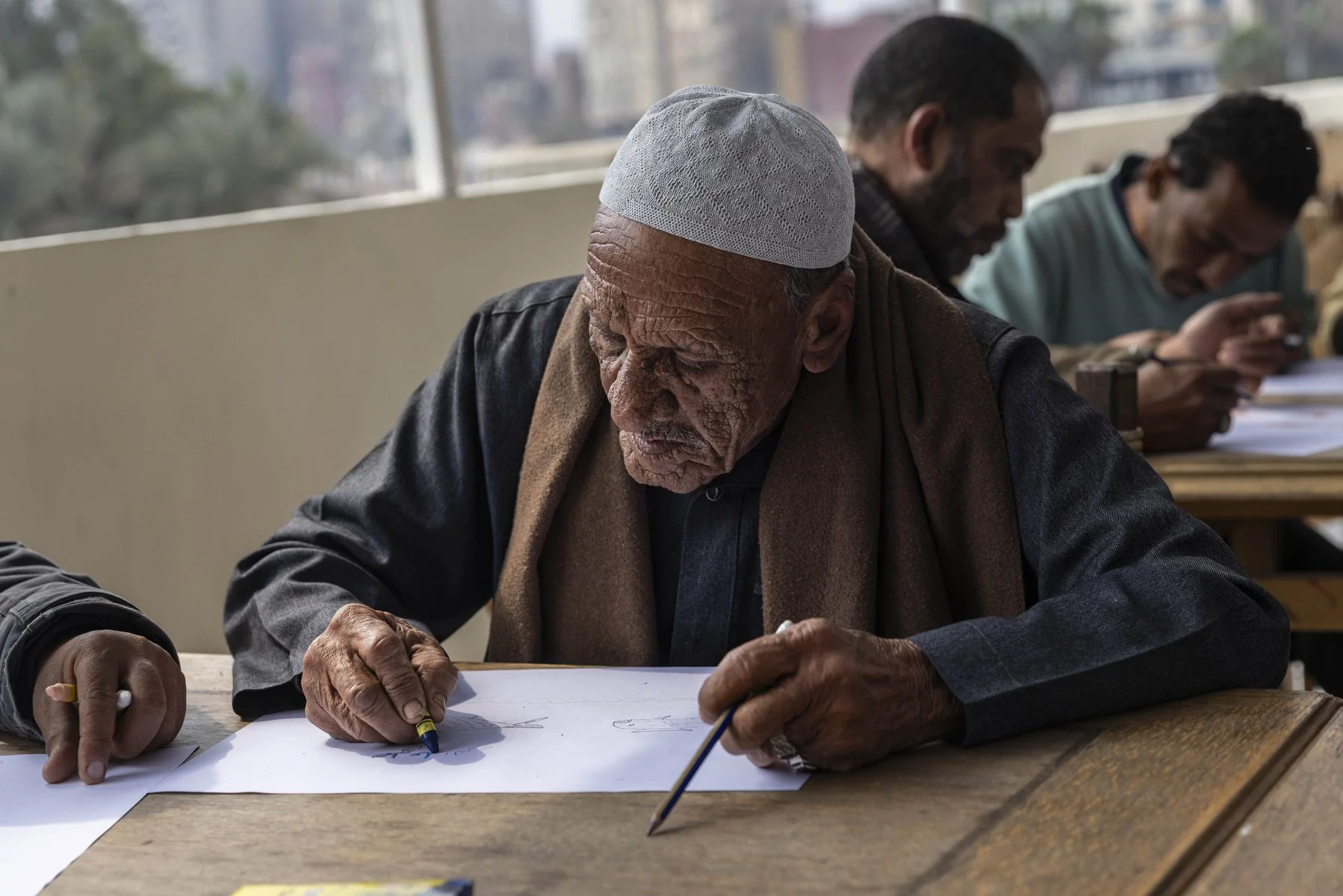
A fisherman during the second workshop to prepare for the 2025 Nile Parade
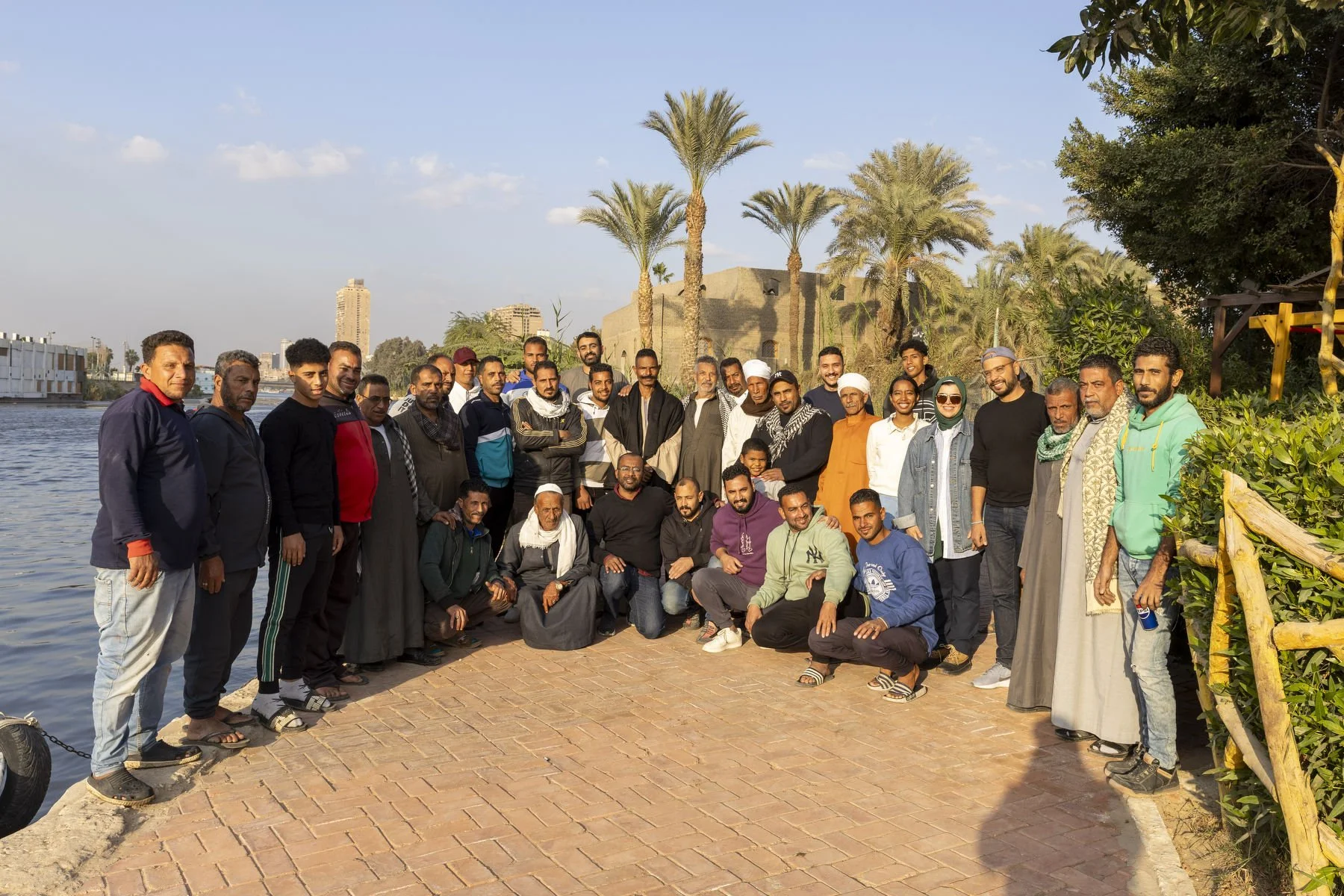
A group picture with the fishermen and participants during the first workshop to prepare for the 2nd edition of the Nile Parade. Photo: Islam Safwat
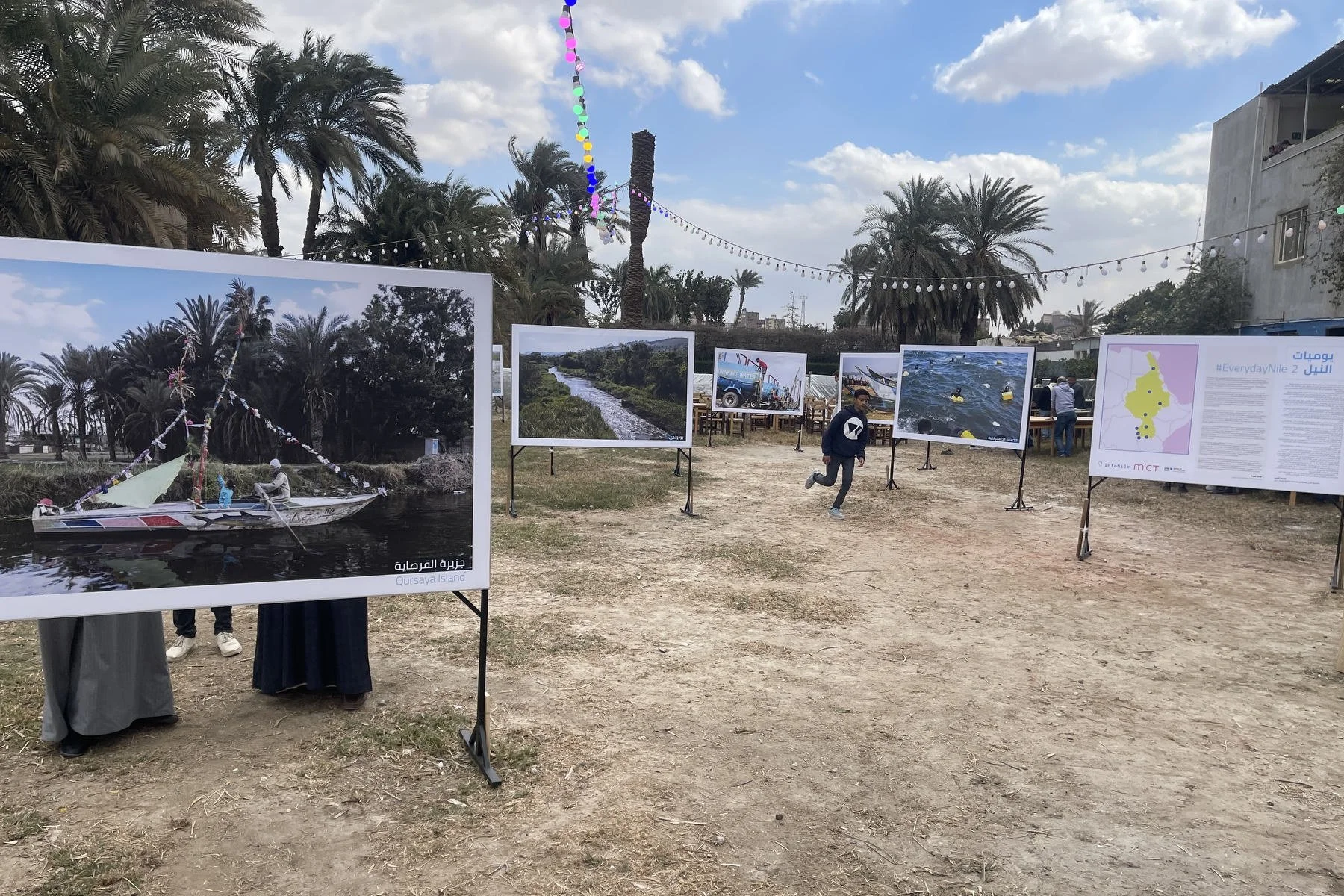
EverydayNile Exhibition
For the preparations of the 2025 Nile Parade, we rented a large empty plot on the island to host the event. This space became the central hub where we welcomed visitors, held the EverydayNile Exhibition, built a stage for the children’s performance, and set up booths for Dayma, the VeryNile shop, Shoka w Megdaf, and other activities throughout the day.
In its second phase, the EverydayNile Exhibition featured 10 visual stories by 10 different photographers from across the Nile Basin, each exploring water and the Nile in their own country. It was a powerful opportunity not only to celebrate the Nile, but to share lesser-known stories and knowledge from across the basin.
While preparing and installing the exhibition, four moments stood out to me:
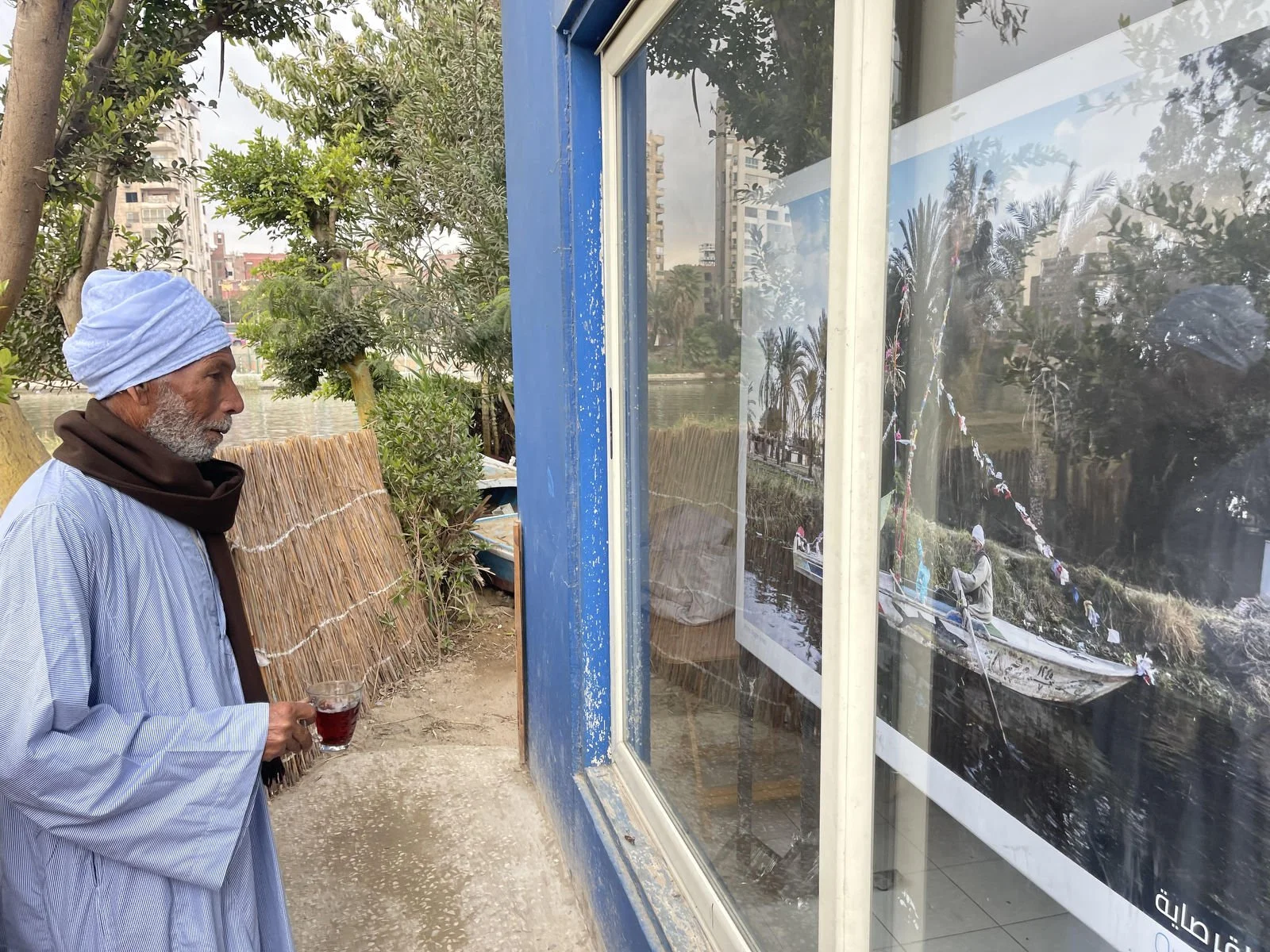
Abo Sayed seeing a large print of himself with his granddaughter from the last Nile Parade in 2024. Standing in front of it and inviting his daughter and granddaughter with so much pride to look at it.
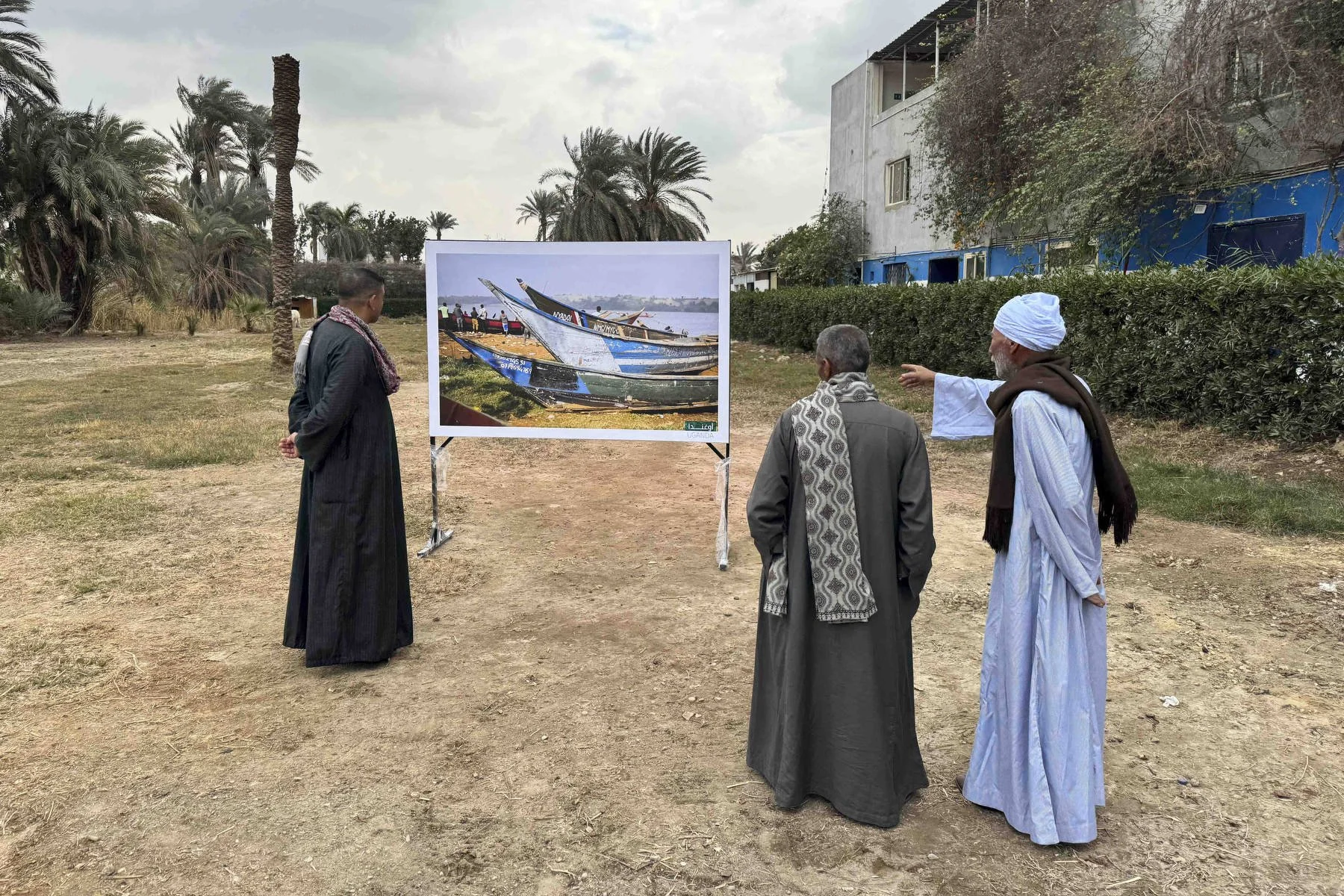
During a break from a fishermen’s workshop, I tested one of the exhibition stands featuring a large image of Ugandan boats on the shore. A group of fishermen wandered over and started debating the types of wood used and guessing which country the boats might be from. Most of them couldn't read, but the photo resonated with them, sparking conversation and recognition. Photo Credit: Islam Safwat

A photo showed all the fishermen from the first Nile Parade in 2024. Fishermen and their Families gathered in front of this image, pointing themselves out, sharing memories, and taking photos. Photo Credit: Magued Soliman
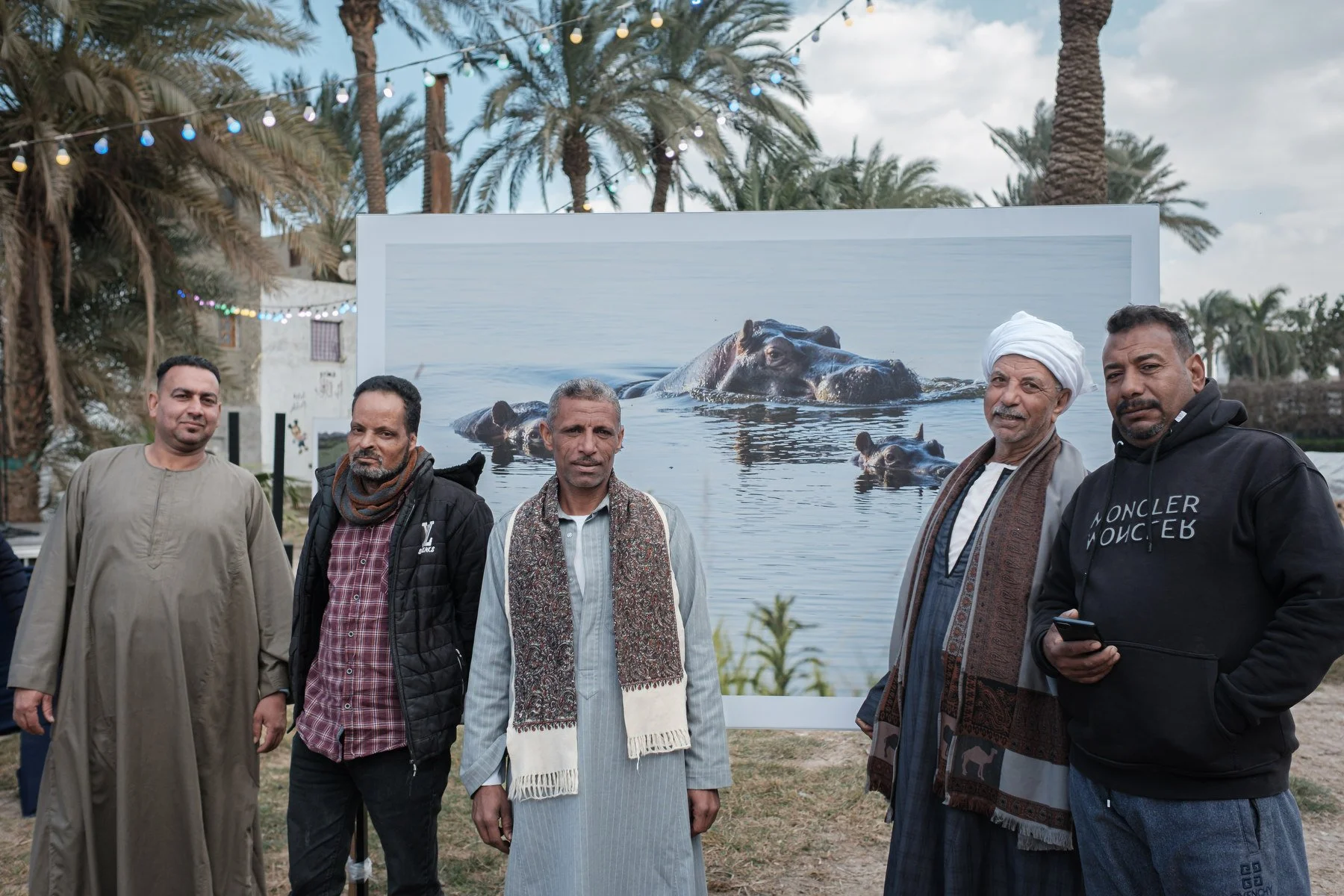
One image showed a hippopotamus in Rwandan waters. A group stood before the life-sized photo, taking pictures with their phones. They started talking about how hippos once lived in the Nile in Egypt before the dam was built. Photo Credit: Aly Hazzaa
The music workshop for the kids of the fishermen and women of Qursaya was an important part of the second edition of the Nile Parade. This time, we had more time to train and produce something better. For three months, the kids were meeting with Youssra El Hawwary every week to play, discuss, compose, and sing songs about the Nile and from their own environment.
I couldn’t attend all the workshops, but every time I did, it wasn’t just about singing, it was full of discussions and stories about their island, the Nile, their lives, and their dreams. And of course, a lot of playing. For the kids, it was a good chance to express themselves better, and it was great to see how Youssra managed everything with them.
This time wasn’t easy; they were about to perform for the first time in front of visitors from outside the island, standing on a stage. Youssra promised them that if everything went well, they would get to leave the island and record their songs in a sound studio.
And just one day before the parade, we booked the studio. The kids all went out of the island, accompanied by a woman caretaker from Qursaya. They spent the whole day in the studio, recording and preparing for the big day.
Art Direction of the Parade
For the Nile Parade and Nile Day, I collaborated with visual artist Ammar Abo Bakr. Working with Ammar is truly different, because with him, you’re not just working with one artist, but with a whole collective of people: self-taught artists, craftsmen, and collaborators who join naturally along the way.
At one point, he brought in one of the fishermen to join his team, asking him to collect natural elements from the island to use in decorating the boats. This gave the work a completely different energy. It wasn’t just the vision of a single artist, it became a collaborative effort. You can't say any one boat’s decoration was made solely by Ammar; it was shaped by the hands of his entire team, with each person adding their own creative touch.
This brought a beautiful spirit to the work, perfectly in line with the whole project’s foundation: collaboration and co-creation.
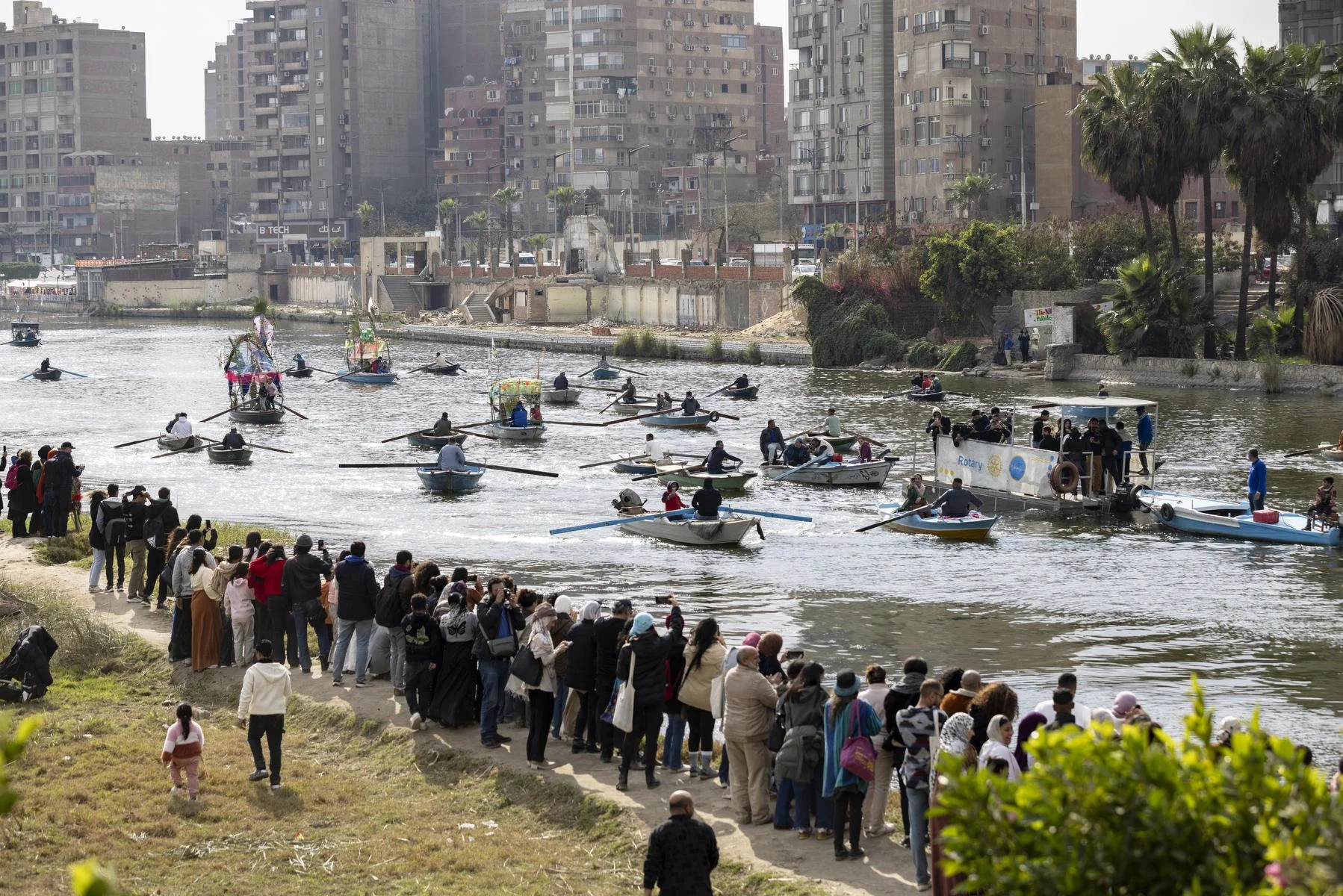
The 2025 Nile Parade
On February 22, 2025, we held the second edition of the Nile Parade, despite many challenges, such as securing permits and coordinating all the logistics necessary. In the end, we welcomed over 500 visitors, many of whom crossed the Nile by boat to attend.
We opened the day by sharing the story behind the Nile Parade, its purpose, and what people could expect. The program included two parades on the Nile and two performances by the Kids of the Nile.
Throughout the day, people mingled and engaged with different parts of the experience: exploring the EverydayNile exhibition, taking photos, enjoying homemade food prepared by the women of Qursaya, joining eco-tours with Dayma, participating in recycling workshops with VeryNile, listening to music, dancing, having conversations, and exchanging ideas.
It was a day of connection, celebration, and collective energy.
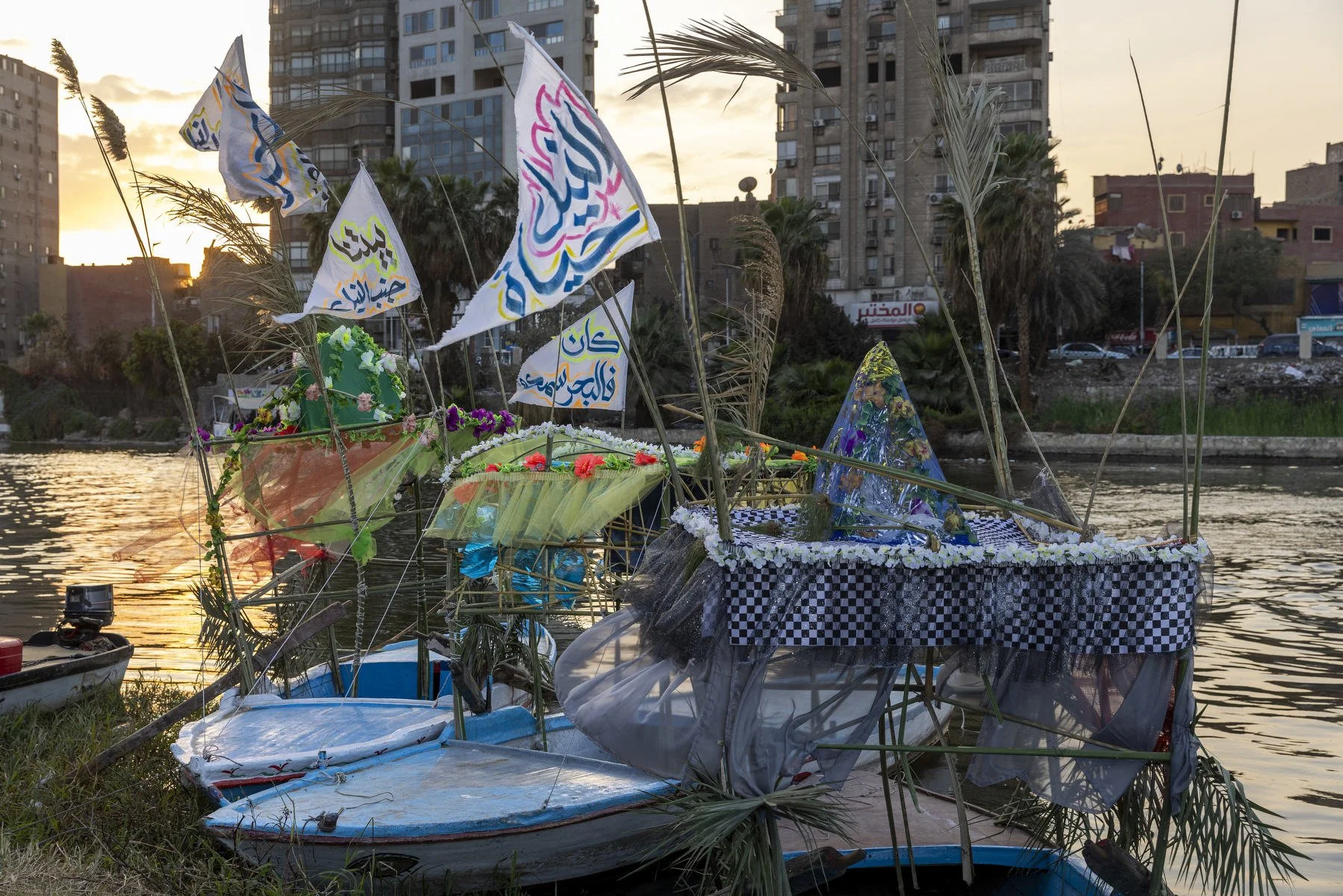
Messages to the Nile
During our preparations for Nile Day, we wanted to find a way for people to send messages to the Nile, to express their emotions, reflections, and hopes. Photos felt like a powerful way to spark those feelings. So, we printed postcards using images from the exhibition, and invited both visitors and Qursaya residents to write their thoughts on the back. Each message became a small, personal tribute to the Nile.
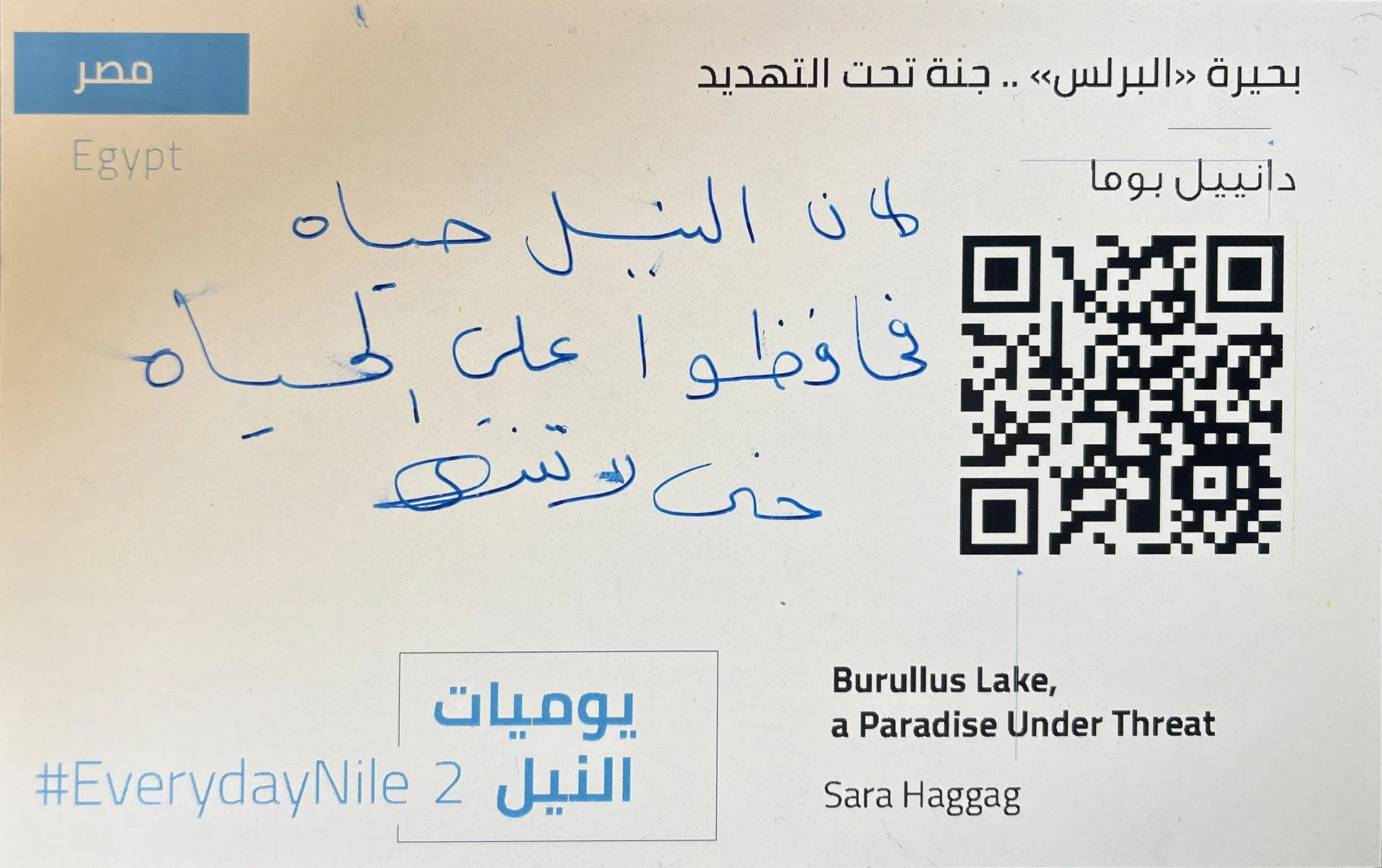
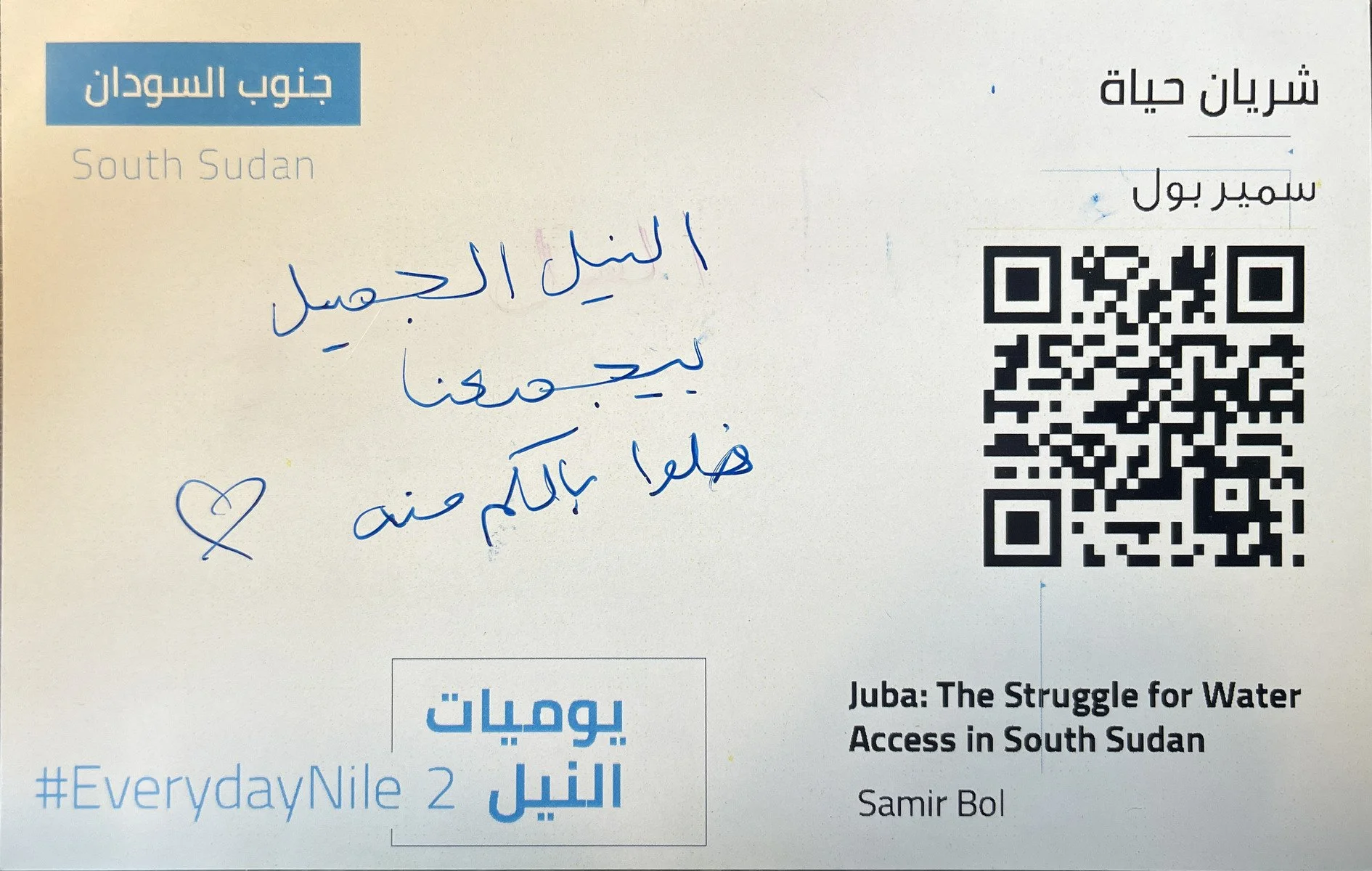
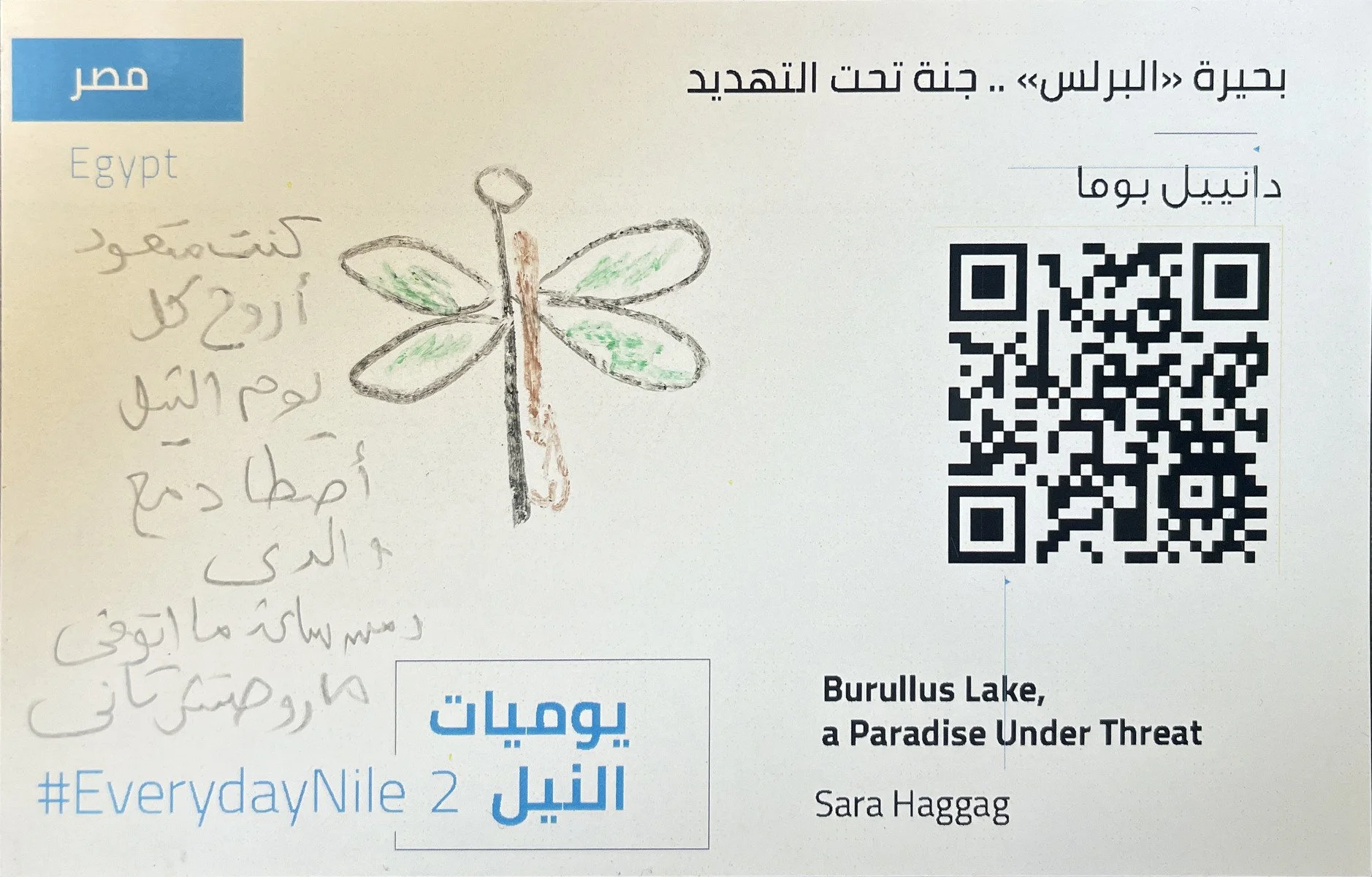
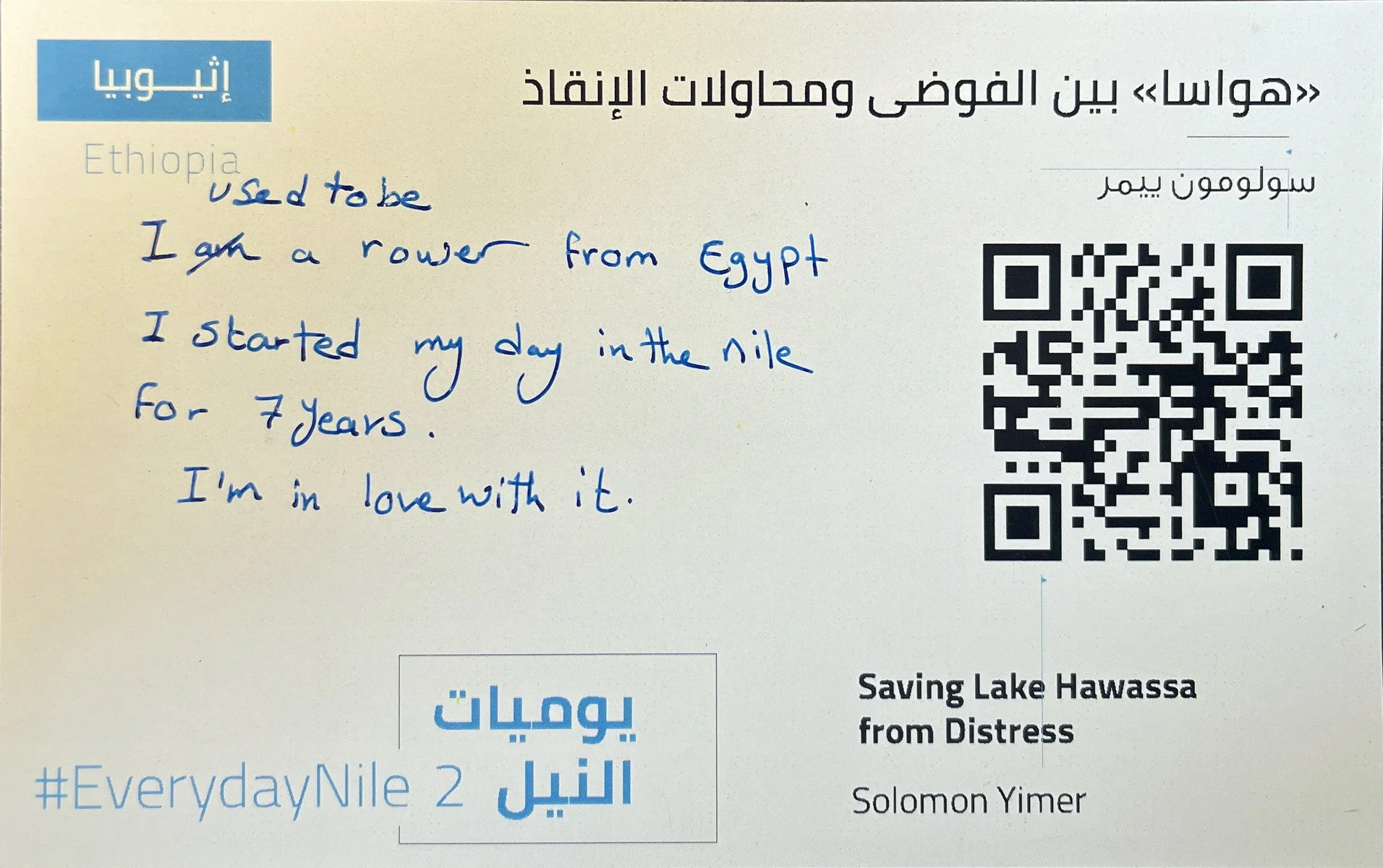
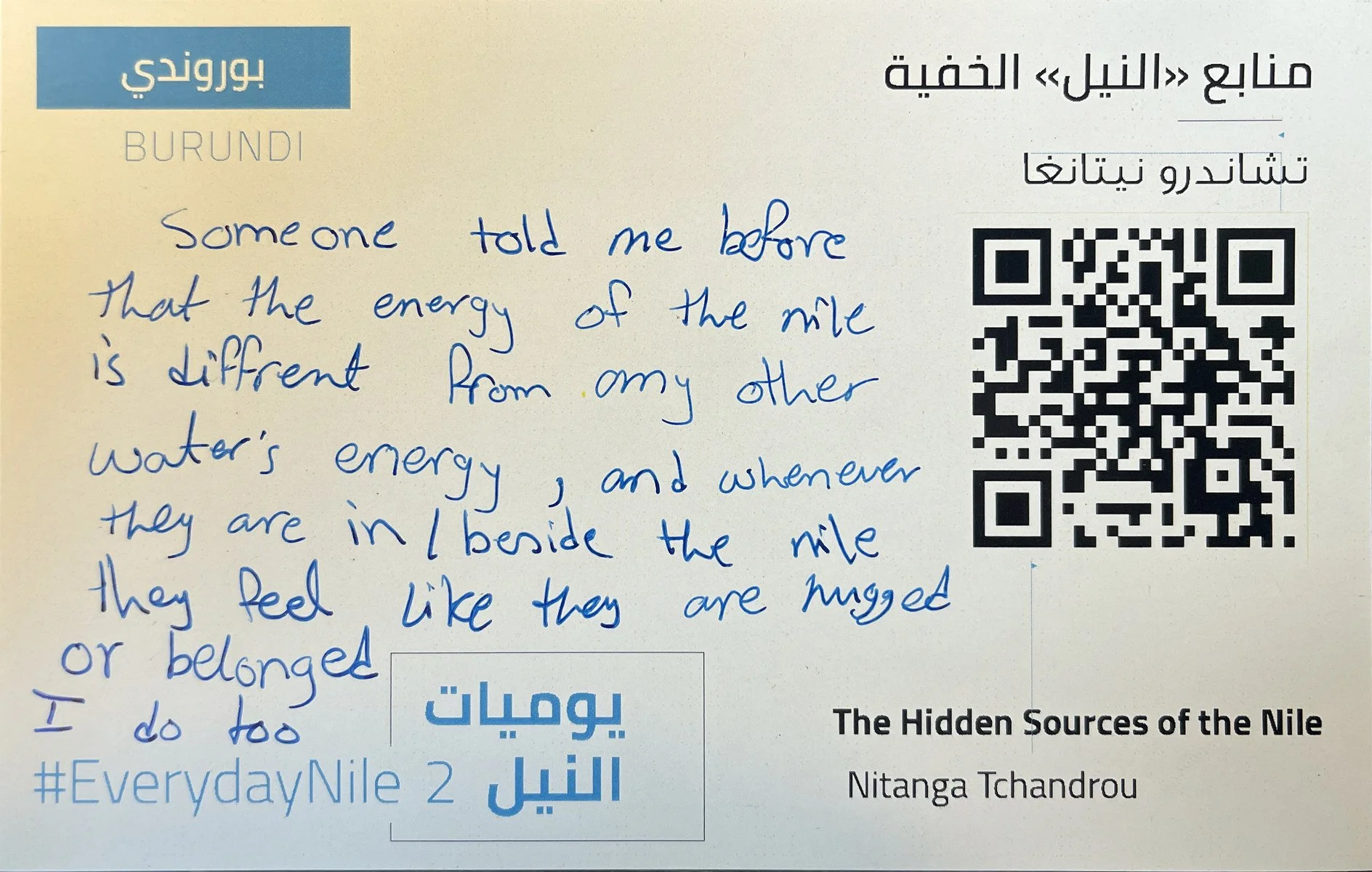
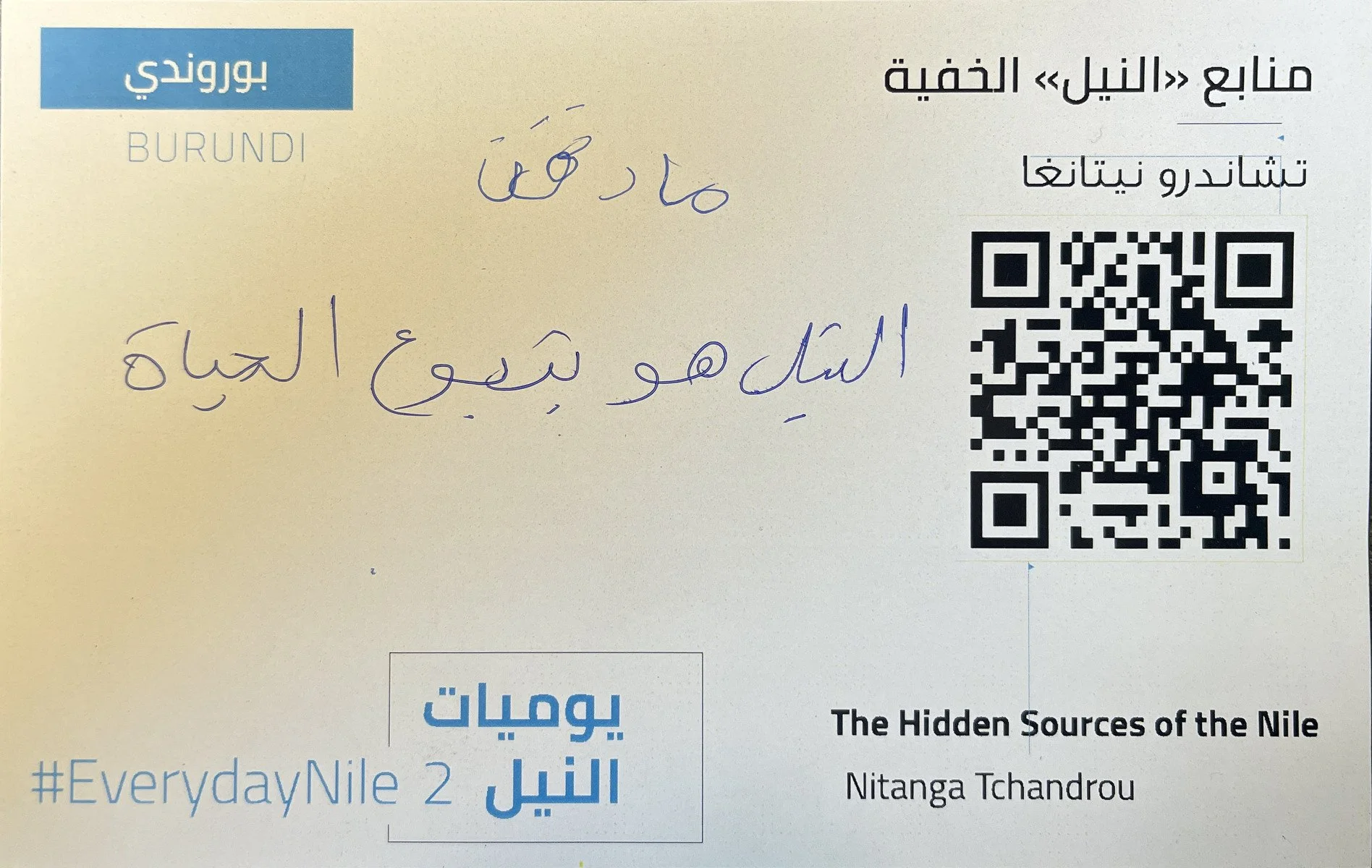
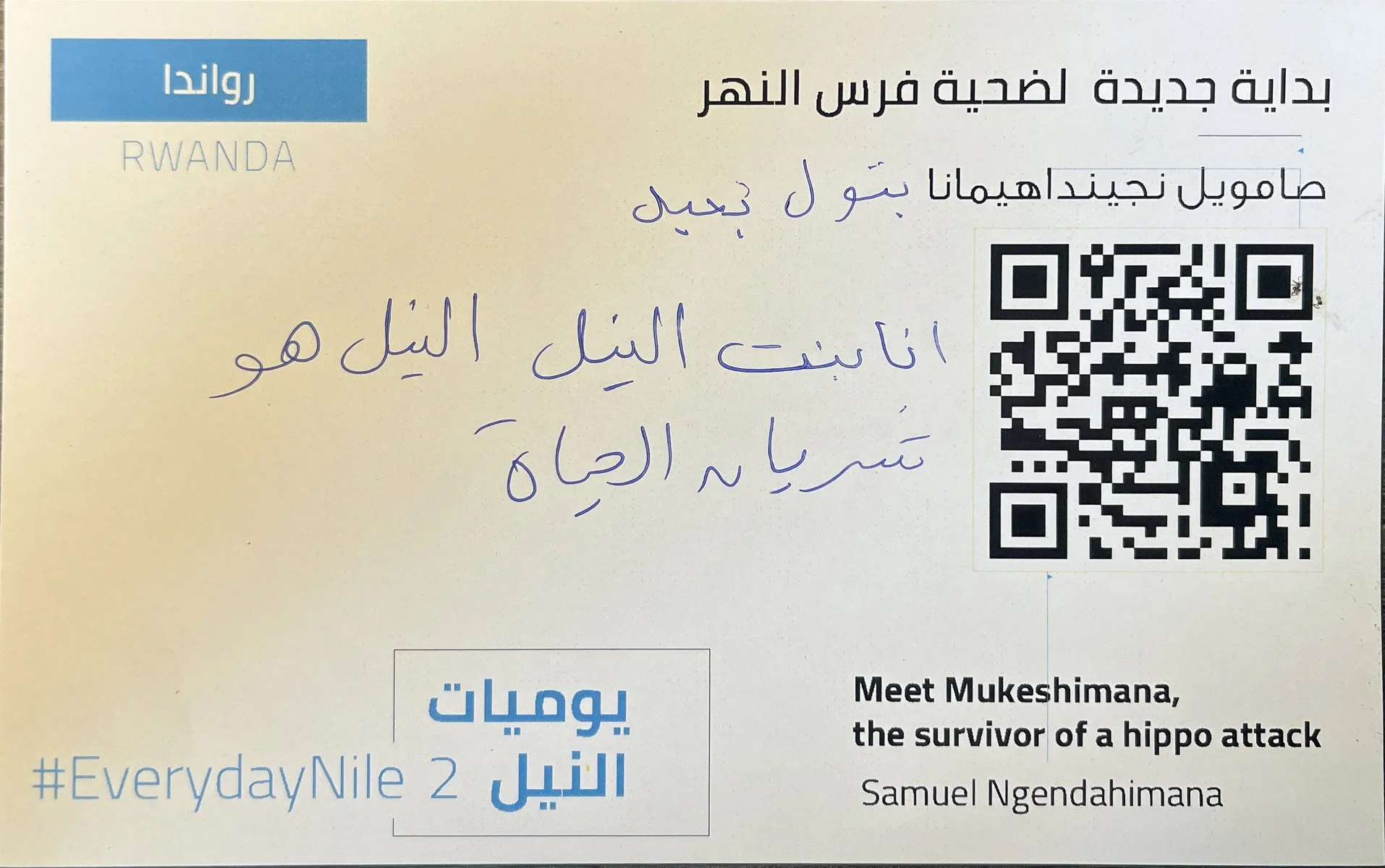
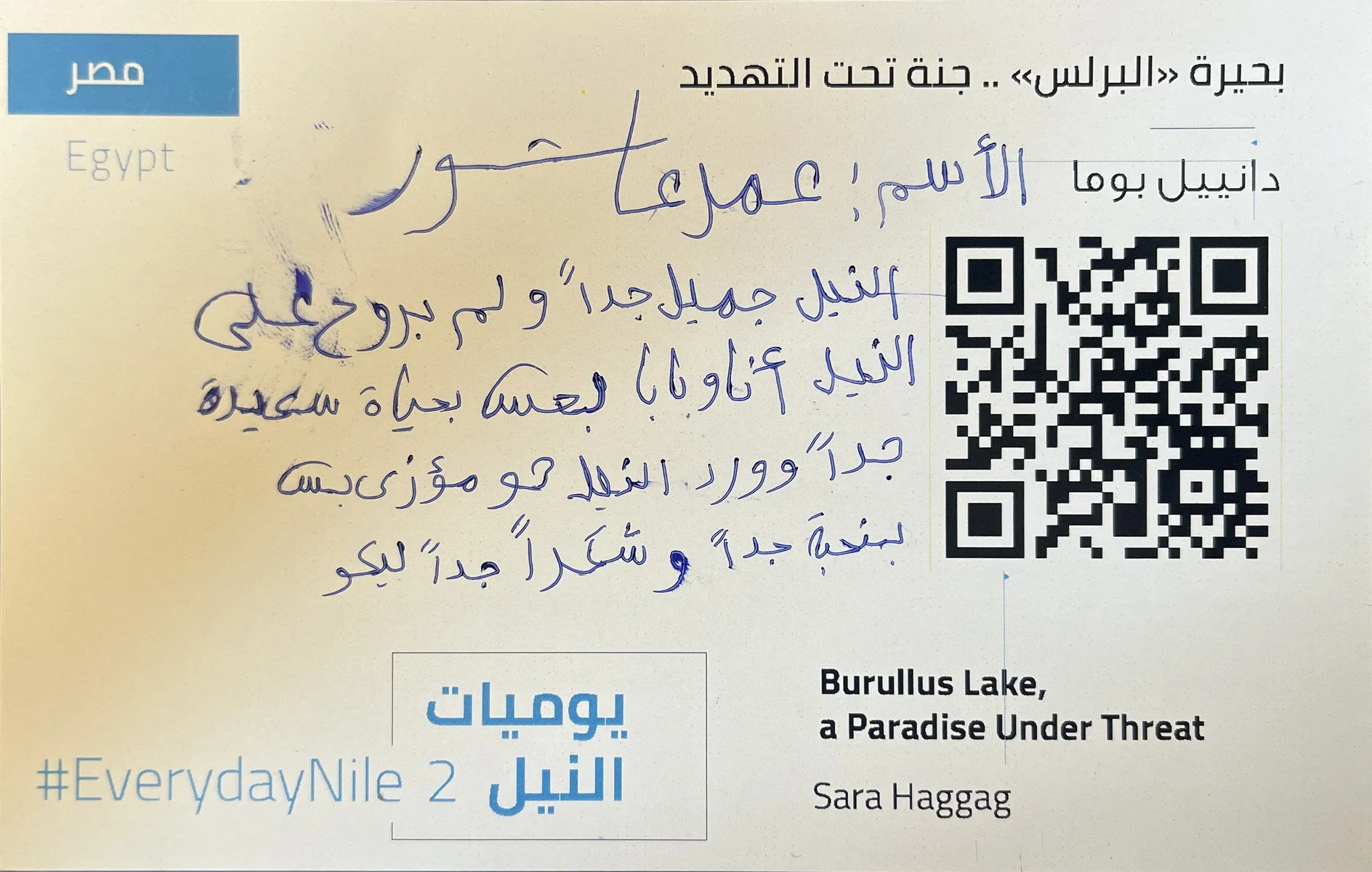
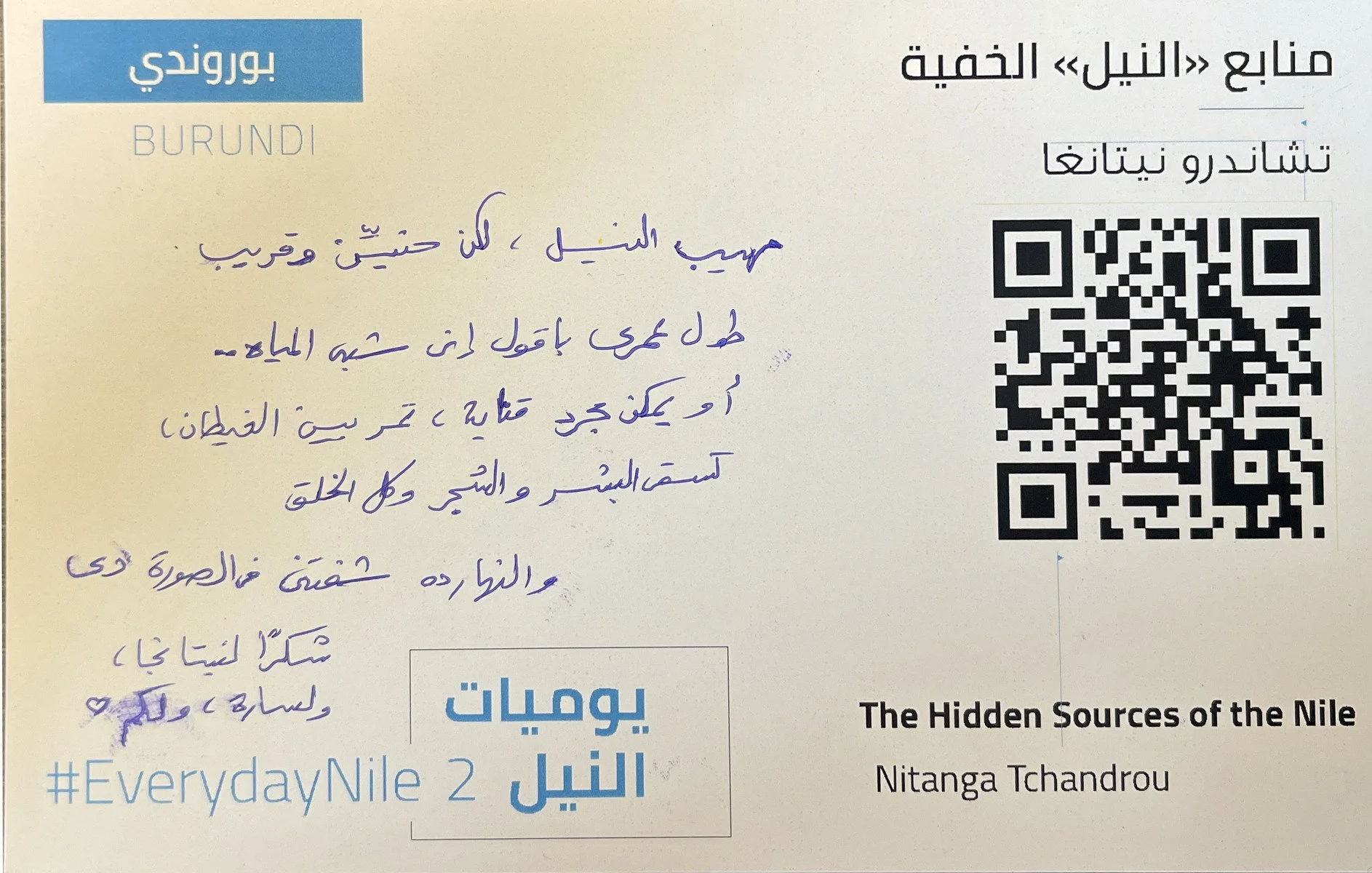
“All artists are alike. They dream of doing something that’s more social, more collaborative, and more real than art.”
My Mind map and to do list one week before the Nile Parade
